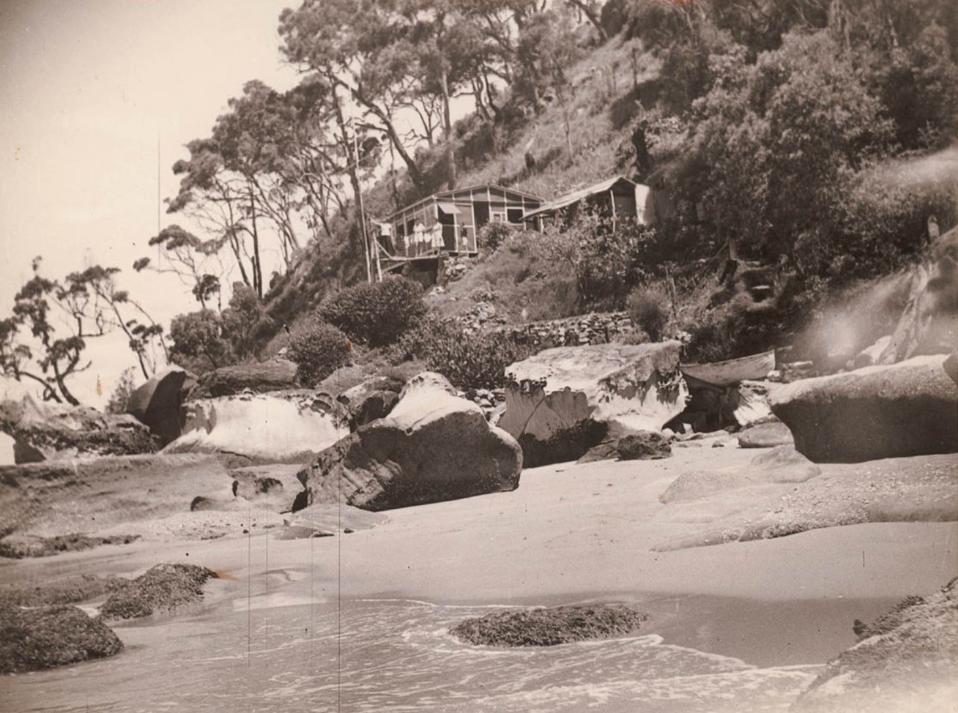September 22 - 28, 2019: Issue 422
Pittwater Roads II: Where The Streets Have Your Name - Great Mackerel Beach
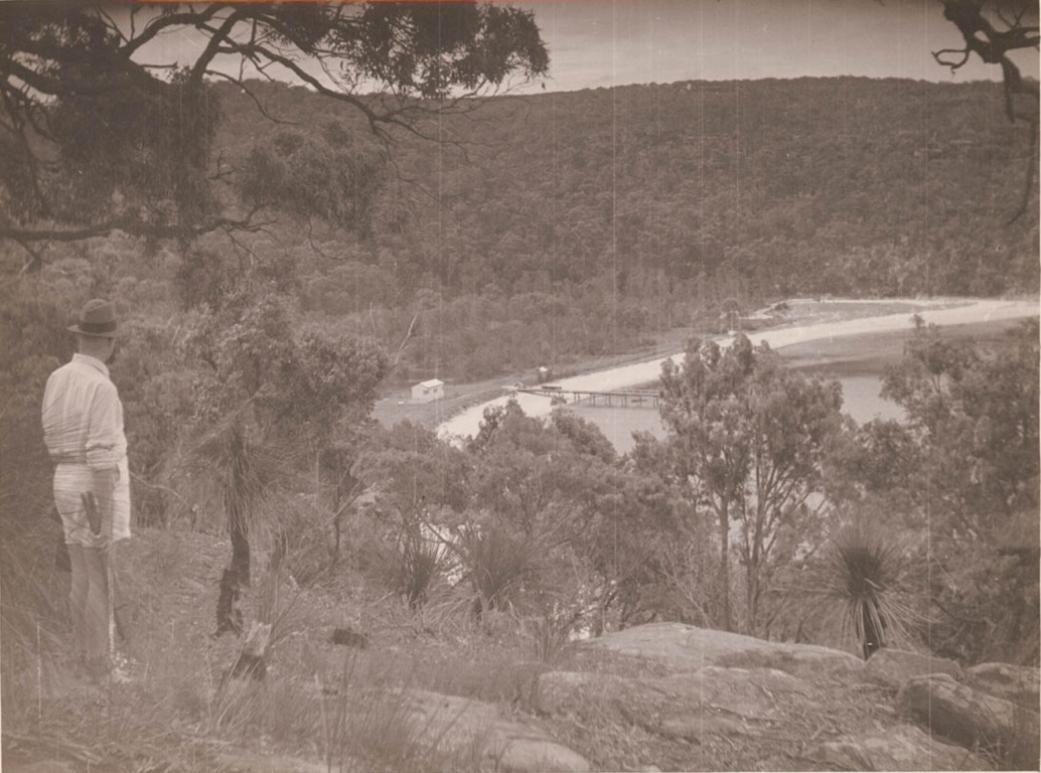
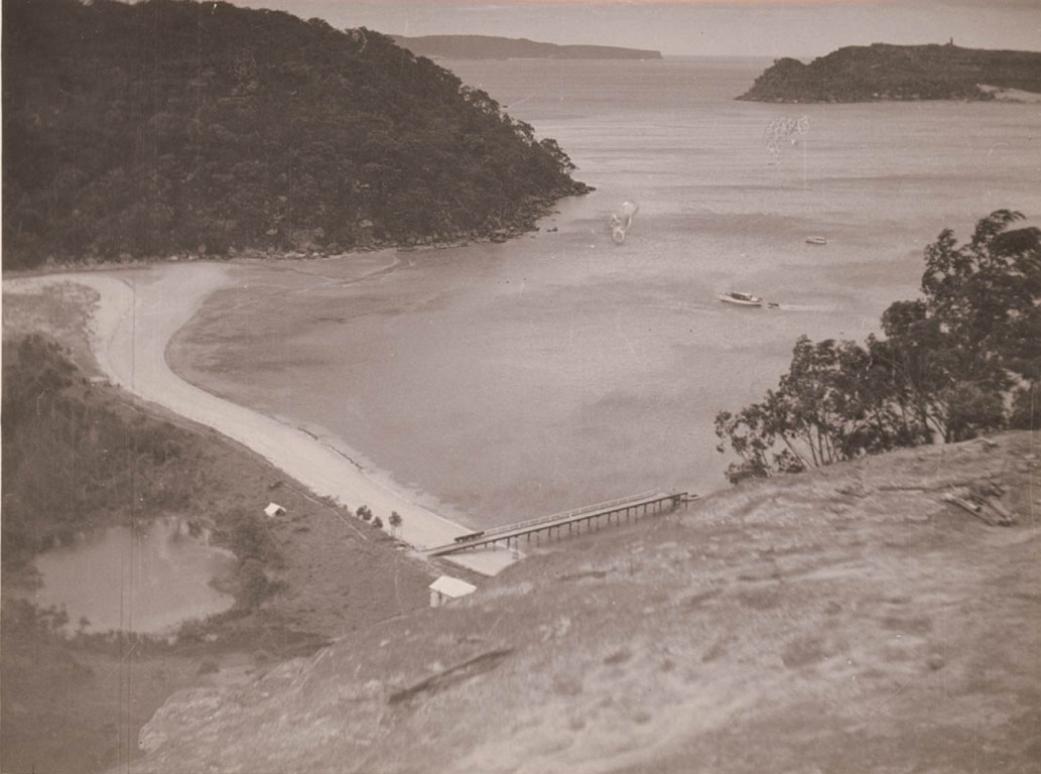
The first Europeans to hold land at Great Mackerel Beach, under the Land Grants system, were Martin Burke and James Kirby.
Memorials Nos. 131, 187, 188, 189, 190, 191,1
192, 193, 194, 195, 196, 297, 198, 199, 200, 201, 202, 203, 204, 205, 206, 207, 208, 209, 210, 211, 212, 213, 214, 215, 216, 217, 218, 219, 220, 221, 222, 223, 224, 225, 226, 227, 228, 229, 230.
Register No. 1.
THE Commissioners for hearing and determining
upon Claims to Grants of Land within the Colony of New South Wales, under the Act of the Governor and Council, 4th William IV. No. 9, do hereby give Notice that the following Claims have been filed with their Secretary : —to wit—
No. 188. By Martin Burke, of Pitt Water, to 100 Acres of Land, promised by Sir Thomas Brisbane to John Clarke, now, of Launceston, a pensioner of the 102d regiment, described as follows; situate in the county of Cumberland, parish of Broken Bay, 60 acres at Great Mackerel Beach, on the western shore of Pitt Water, and 40 acres adjoining and extending towards an inlet called the basin, bounded on the north by James Reiby's 40 acres, on the west by a line south 46 chains, on the south by a line east 18 chains, and on the east by the Little Mackerel Beach, Pitt Water, and the Great Mackerel Beach.
And the said Commissioners do hereby require all and every Person or Persons having any claim to the said Lands to present their claims or pretentions thereto within the period of three months from the date of this present Notice, and in default thereof, all claims and pretentions to such Lands will be barred and extinguished, except as now filed.
Dated at Sydney, New South Wales, this 21st day of April, One thousand eight hundred and thirty four.
By Order of the Board;
JOHN DILLON, Secretary. Government Gazette Notices (1834, April 23). New South Wales Government Gazette (Sydney, NSW : 1832 - 1900), p. 234. Retrieved from http://nla.gov.au/nla.news-article230686591
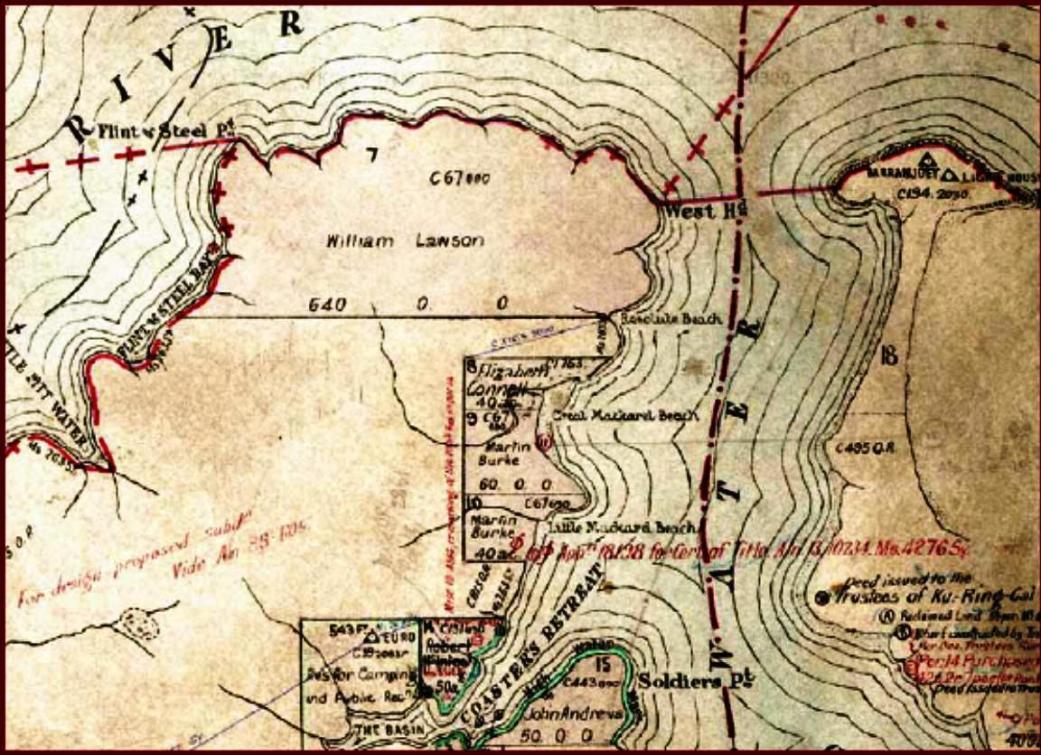
In 1904 William Moore Connell passed away and the land at Great Mackerel Beach was bequeathed to the youngest son, Leslie:
Department Of Fisheries,
Sydney, 1st August, 1906.
APPLICATIONS FOR LEASES FOR OYSTER CULTURE.
IT is hereby notified, for general information, that the undermentioned persons have applied to lease for Oyster Culture the portions of land rest opposite their respective names as mentioned hereunder.
Tracings showing the positions of the several portions enumerated may be inspected at this Department daily, excepting Saturdays, between 11 and 3 o'clock, and on Saturdays between 11 and 12 o'clock.
Any person may, by memorial to the Board of Fisheries, within thirty days from the date of this notice, and on grounds to be stated in such memorial, pray that leeases of the portions may not be granted.
J. A. BRODIE,
Secretary.
Pitt Water.
4725 4726 4504
Henry Edward Wilson. Do - On the eastern bank of a small creek flowing behind Great Mackerel Beach through E Connell's portion No. 8 of 47 acres 3 roods at Pitt Water.
On the western bank of a small creek flowing behind Great Mackerel Beach, Pitt Water, through E. Connell's portion No. 8, and lying 725 yards south-westerly from its north-east corner.
William Savage Ongley. - On the western side of the Maze, Pitt Water, fronting Ben Crew's portion No. 29 of 80 acres., Broken Bay. Narrabeen Cumberland. do do 250 250 400 - all three applications 15 years.
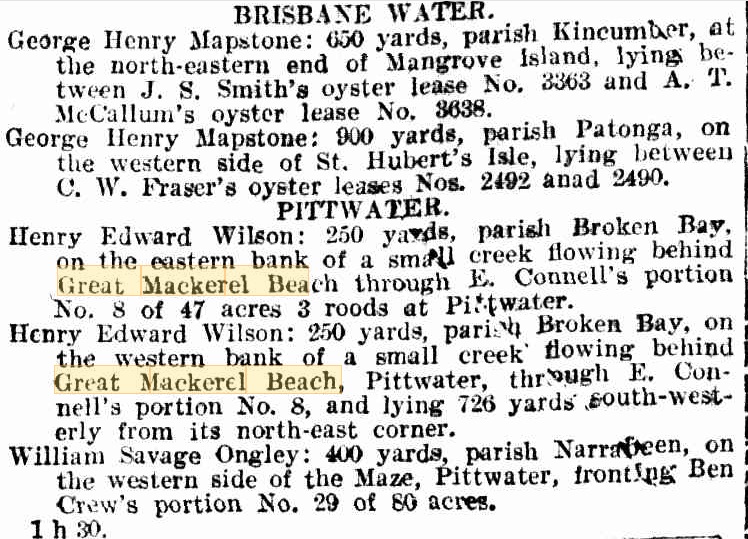
APPLICATIONS FOR LEASES FOR OYSTER CULTURE. (1906, August 1). Government Gazette of the State of New South Wales (Sydney, NSW : 1901 - 2001), p. 4425. Retrieved from http://nla.gov.au/nla.news-article226574375
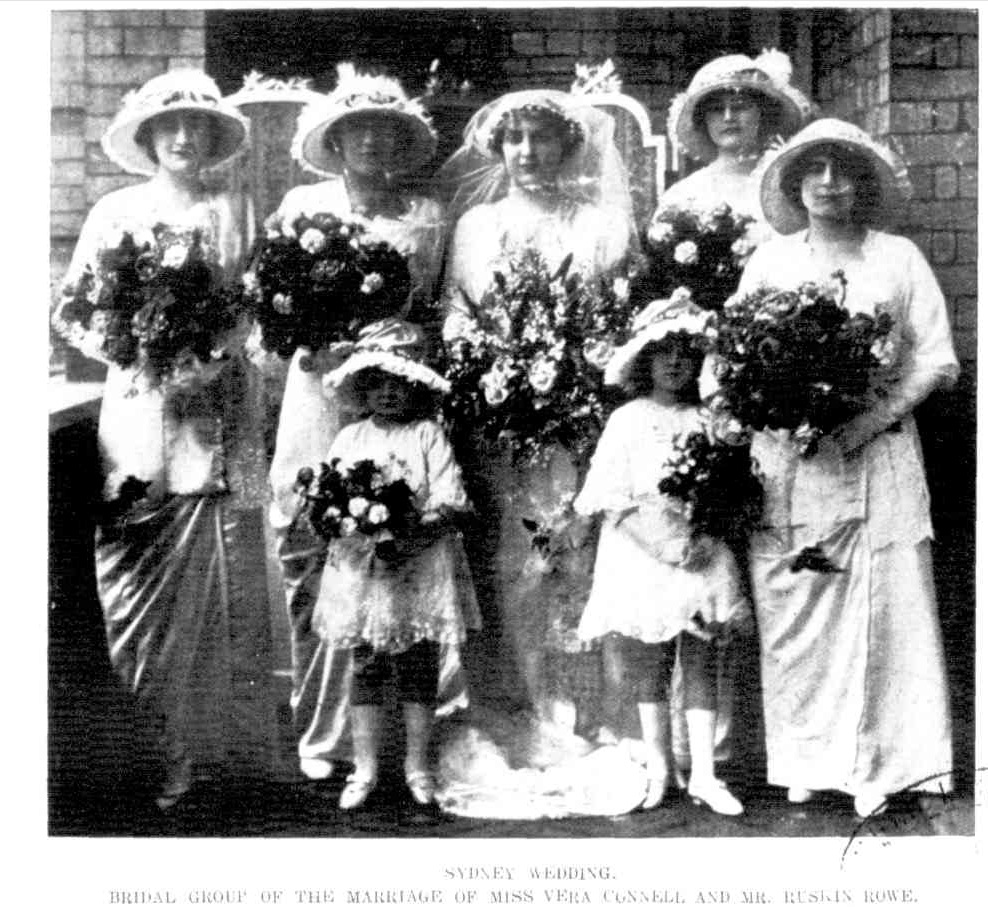
.jpg?timestamp=1568683911530)
.jpg?timestamp=1568690895991)
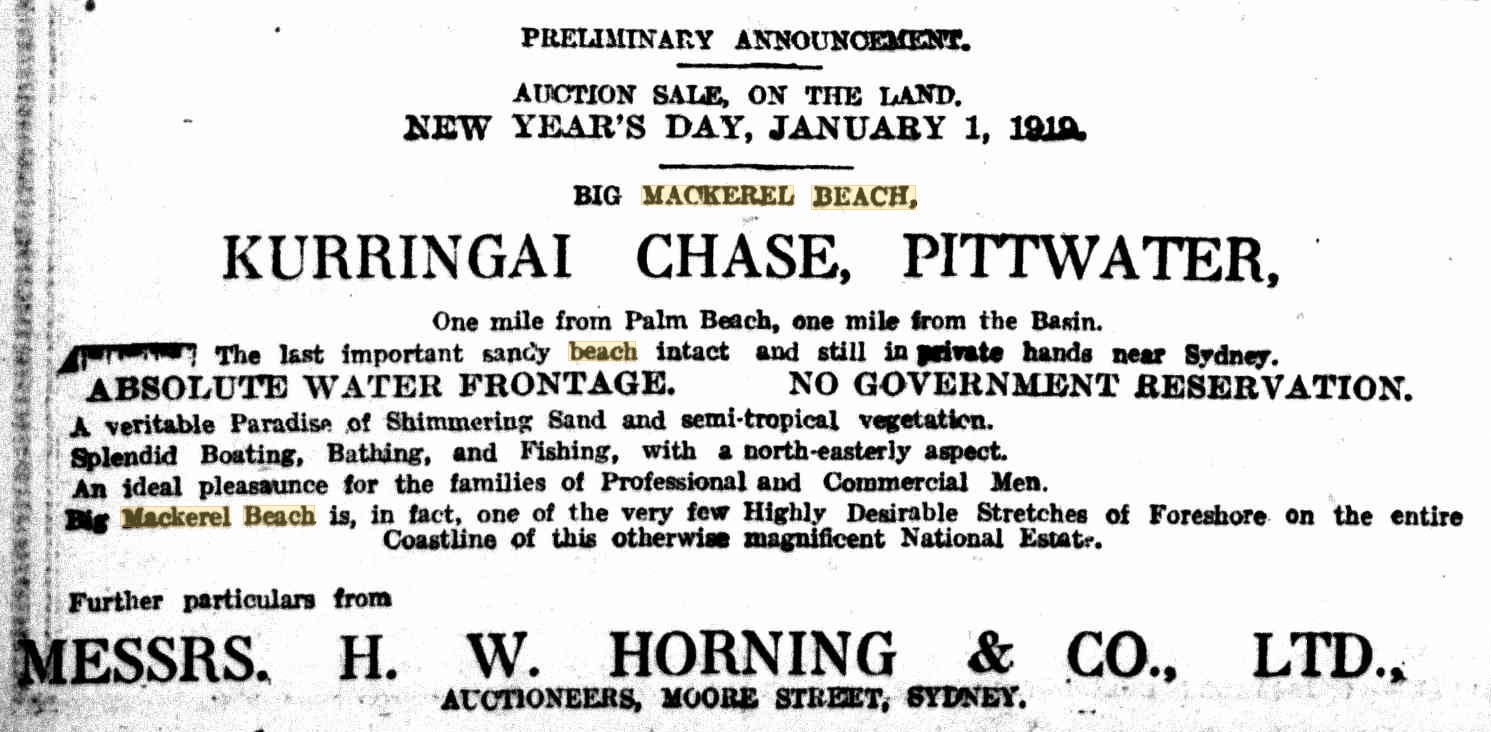
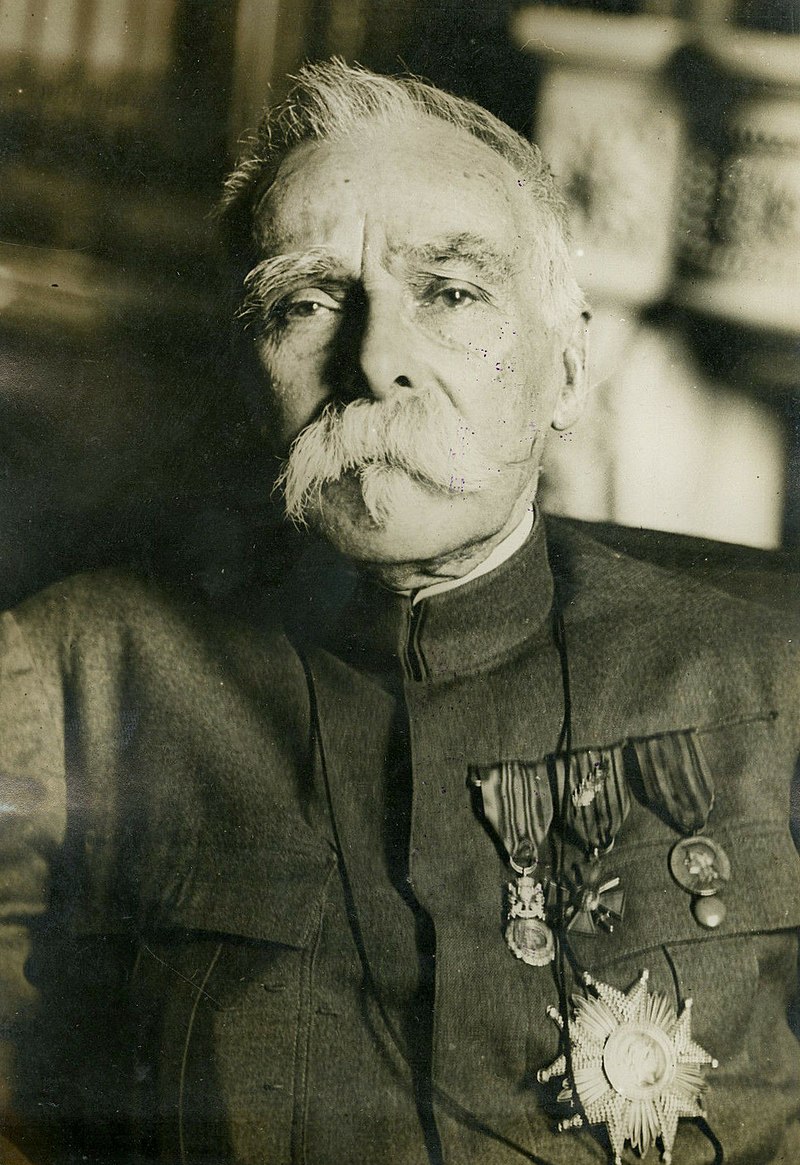
Big Mackerel Beach
Big Mackerel Beach, Kuringai Chase, Pittwater, said to be the last of the white sandy beaches still intact and in private hands in the neighborhood of Sydney, was last week acquired by a syndicate with a view to subdivision and sale by auction during the approaching summer.
The history of this purchase is Interesting. The property was advertised for sale last New Year's Day, and withdrawn In response to a clamor from the three councils of the Northern Suburbs and a protest addressed to the Government by the trustees of Kuring-gai Chase, who not unnaturally objected to seeing one of the largest and most attractive beeches on their foreshores’ cut up into 40ft allotments. The Premier and Minister for Lands favored resumption, but departmental Influence got against the purchase, and the matter was allowed to drop.
The syndicate that has now bought Big Mackerel Beach evidently means business, for we hear that on Monday last a tender was accepted for the erection of a substantial wharf 200ft in length. Building and Building Land (1919, August 20). Evening News (Sydney, NSW : 1869 - 1931), p. 6. Retrieved from http://nla.gov.au/nla.news-article116084188
His Excellency Sir Walter Davidson and Lady Davidson were entertained by the Premier and Mrs Holman and most of the members of the Ministry and their wives at Kur-ing-gai Chase yesterday. PERSONAL. (1919, November 25). The Sydney Morning Herald (NSW : 1842 - 1954), p. 6. Retrieved from http://nla.gov.au/nla.news-article15878892
It's interesting that a tender to build a wharf was accepted prior to a lease for that wharf into the water being applied for:
CHRISTMAS UNDER CANVAS, PITTWATER — KU-RING-GAI CHASE, GREAT MACKEREL BEACH
In Anticipation of the Subdivision Sale on Anniversary Day, January 26. A Limited Number of WALDER'S TENTS will be Erected on the Estate (Payment in Advance) from DECEMBER 24th to NEW YEAR'S DAY.
FRESH MILK. BUTTER, EGGS, and GROCERIES OBTAINABLE, and DRINKING WATER from a Running Stream on the ESTATE.
IMMEDIATE APPLICATION TO H. W. HORNING AND CO., LIMITED,
AUCTIONEERS, 16 MOORE-ST., SYDNEY.
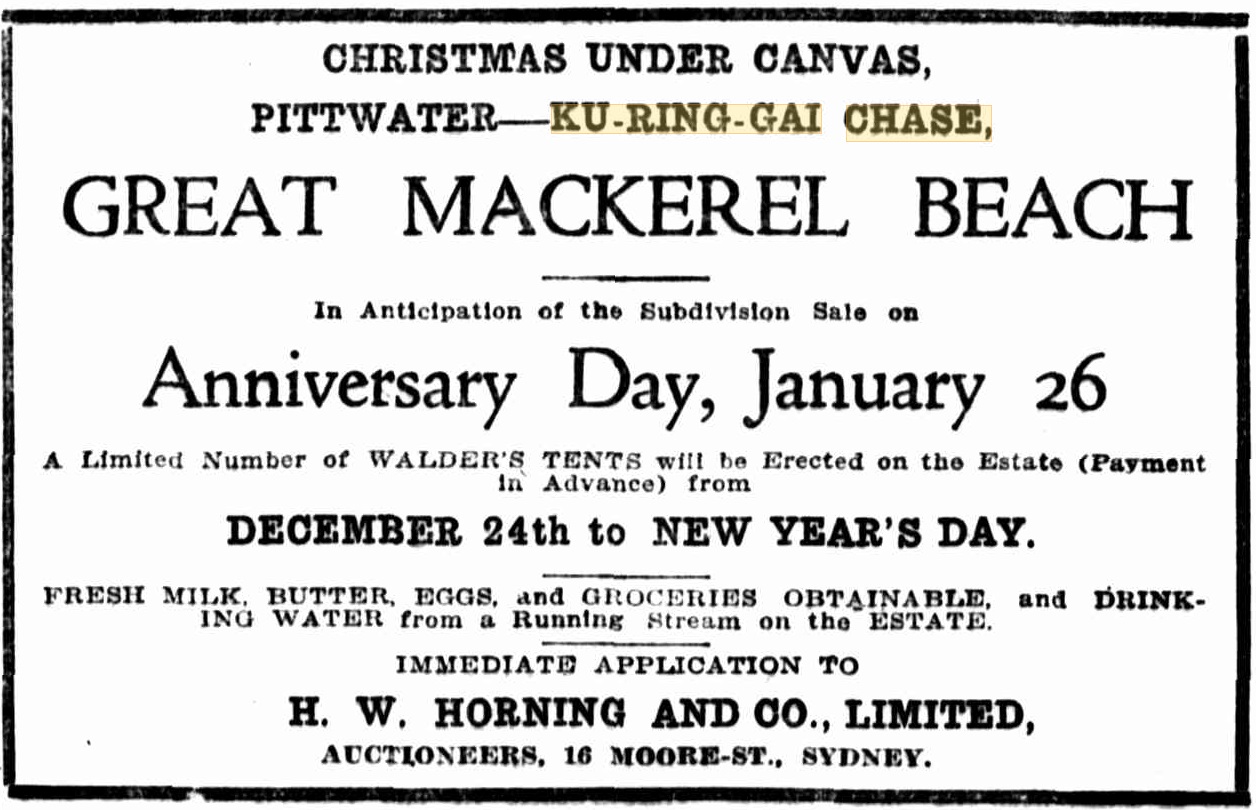
Advertising (1919, December 16). The Sun (Sydney, NSW : 1910 - 1954), p. 6. Retrieved from http://nla.gov.au/nla.news-article222290287
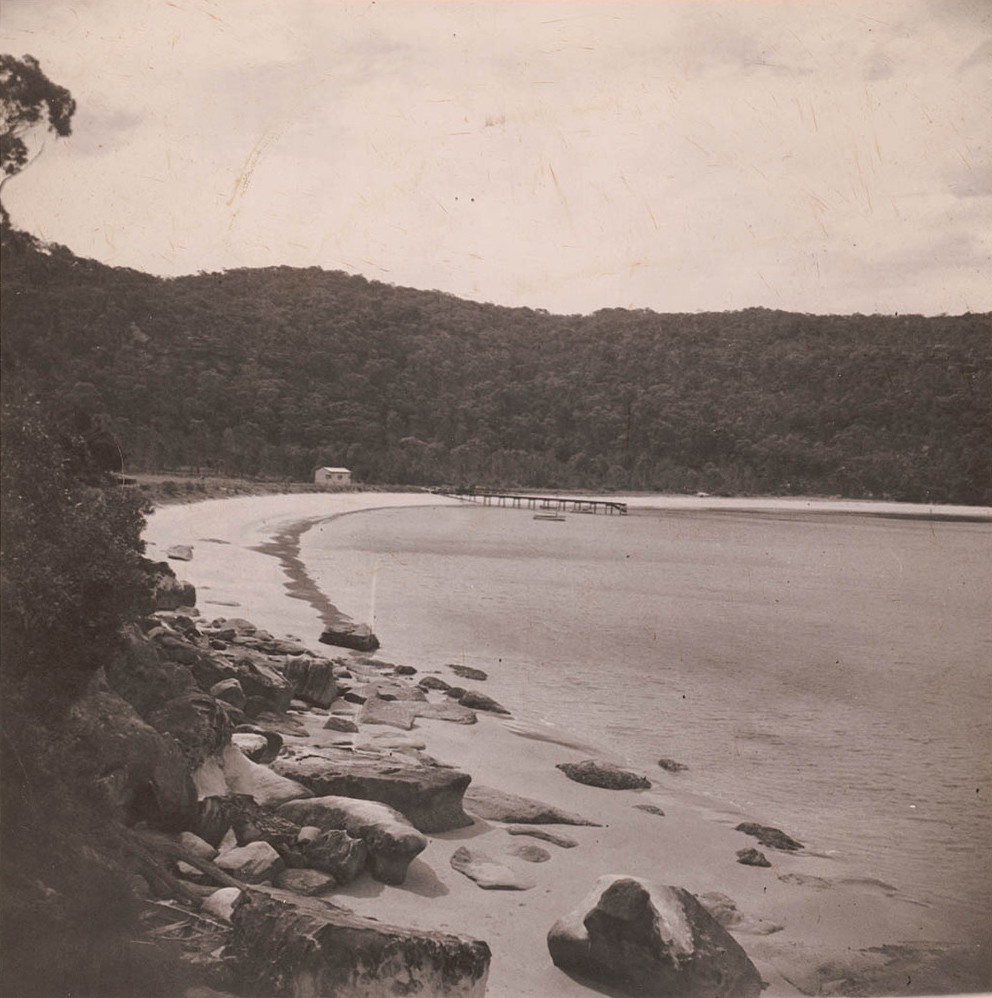
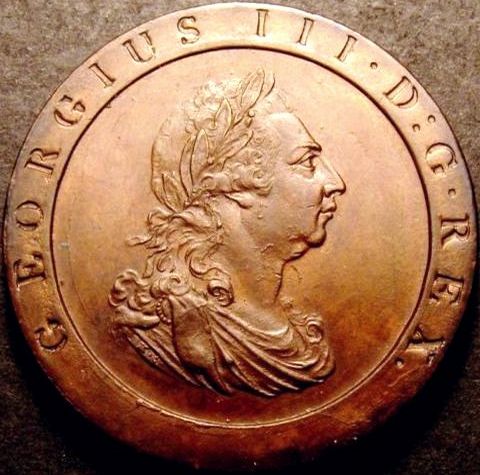
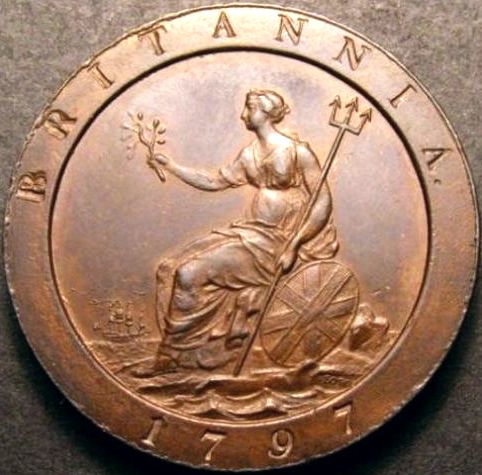
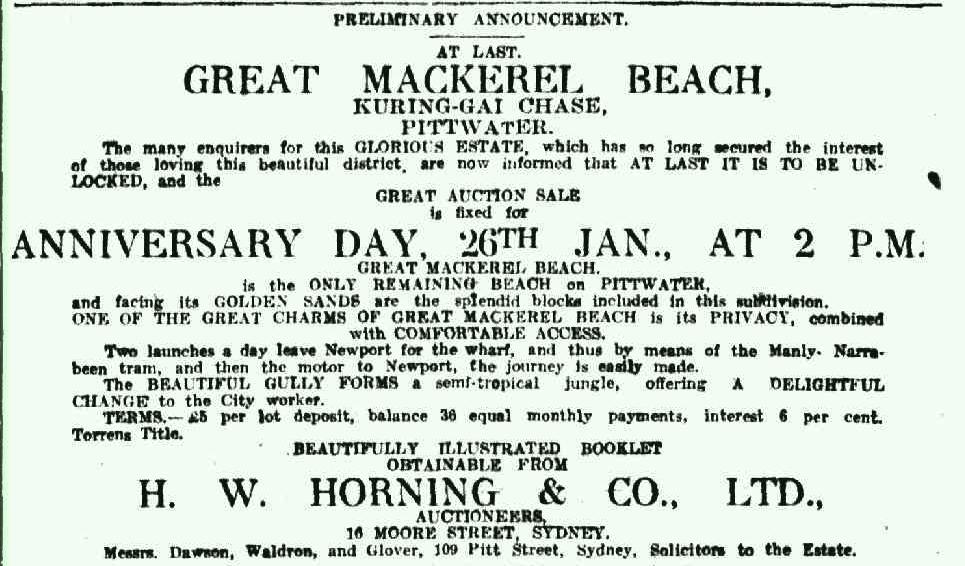
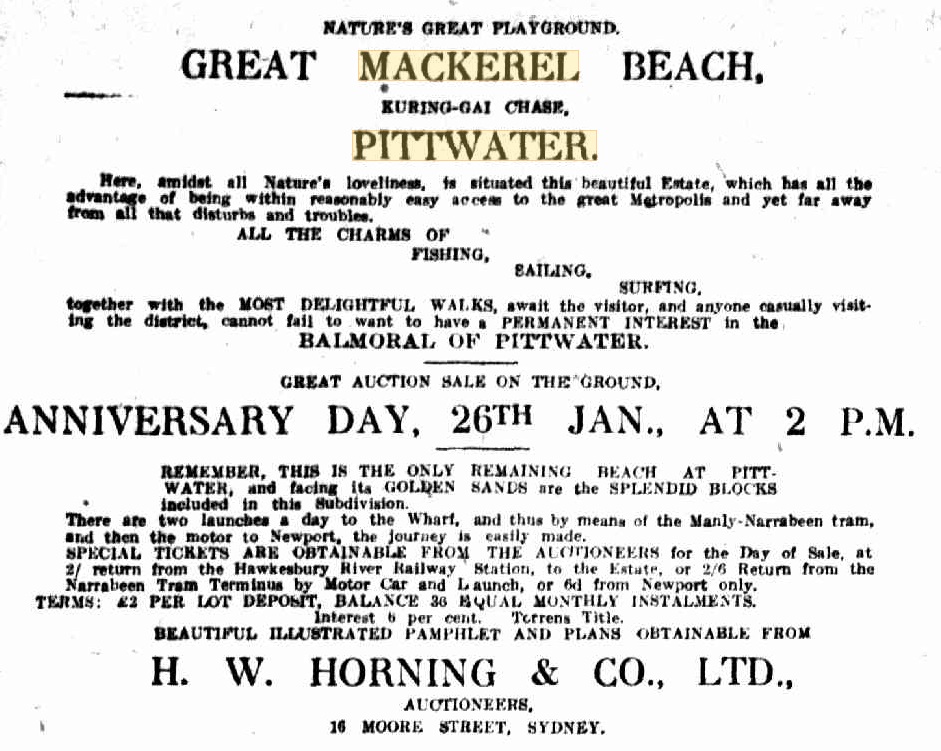
Advertising (1920, January 21). The Daily Telegraph (Sydney, NSW : 1883 - 1930), p. 13. Retrieved from http://nla.gov.au/nla.news-article239660386
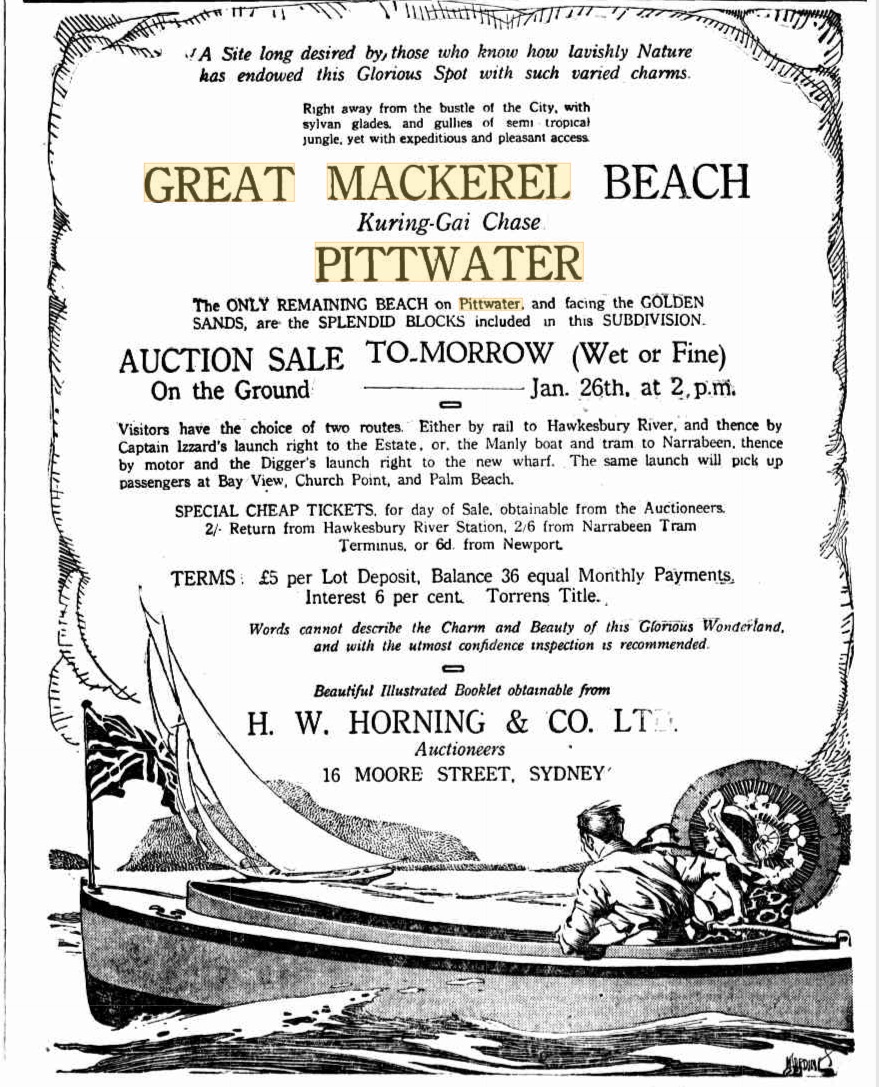
Advertising (1920, January 25). The Sun (Sydney, NSW : 1910 - 1954), p. 10. Retrieved from http://nla.gov.au/nla.news-article221382134
That ''Beautiful Illustrated Booklet'':
Great Mackarel Beach : Kuring-Gai Chase : The Balmoral Of Pittwater
Sydney, N.S.W. : H. W. Horning & Co., 1920. Copy at Mitchell Library has book plate 'Presented to Mitchell Library by Horning & Co, Ltd'. Mitchell Library copy 2 at Q981.1/H1 transferred from Pittwater subdivision plans P13/85-85f. Online images available via the State Library of NSW at: http://digital.sl.nsw.gov.au/delivery/DeliveryManagerServlet?embedded=true&toolbar=false&dps_pid=IE6666410
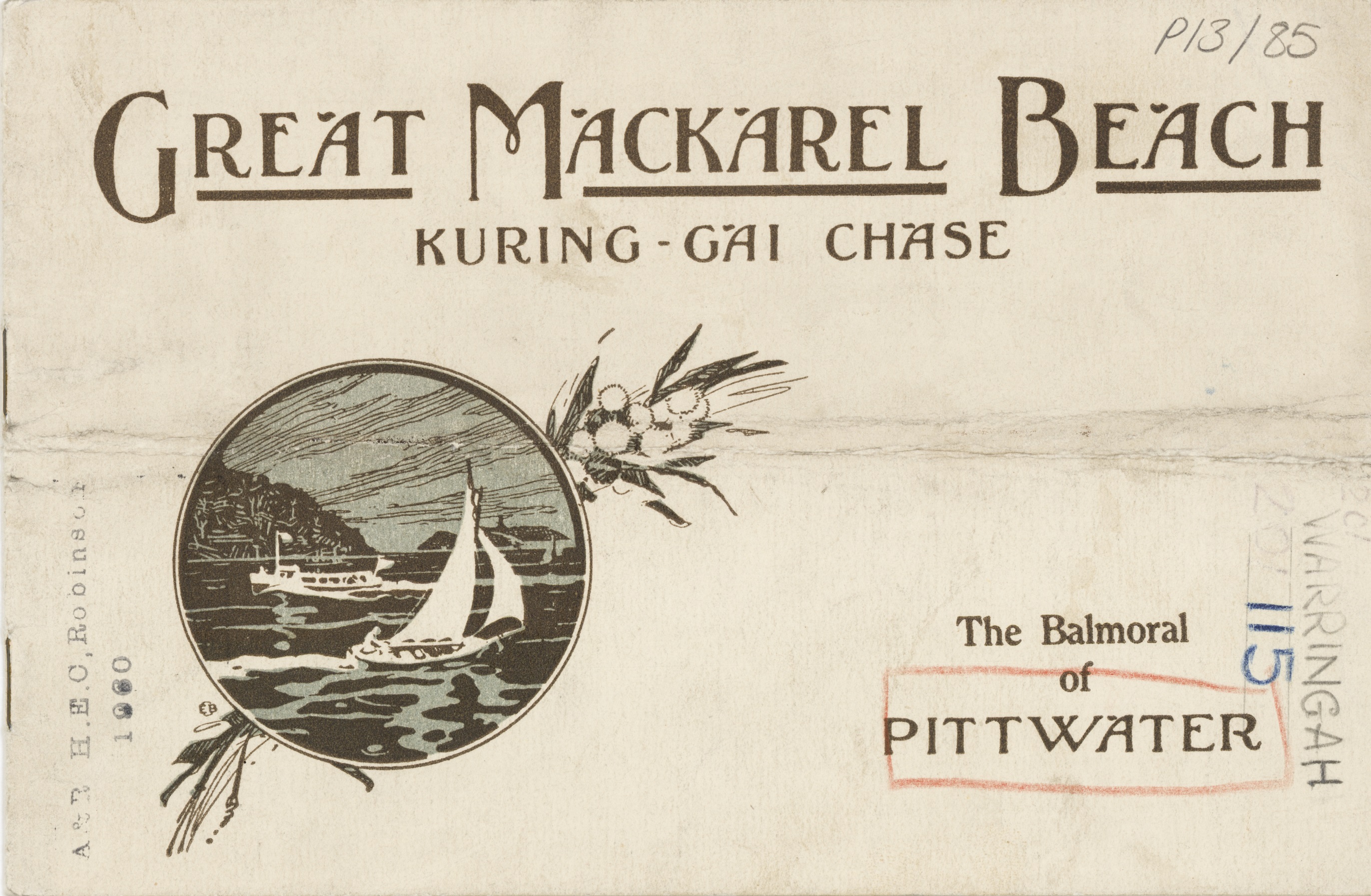

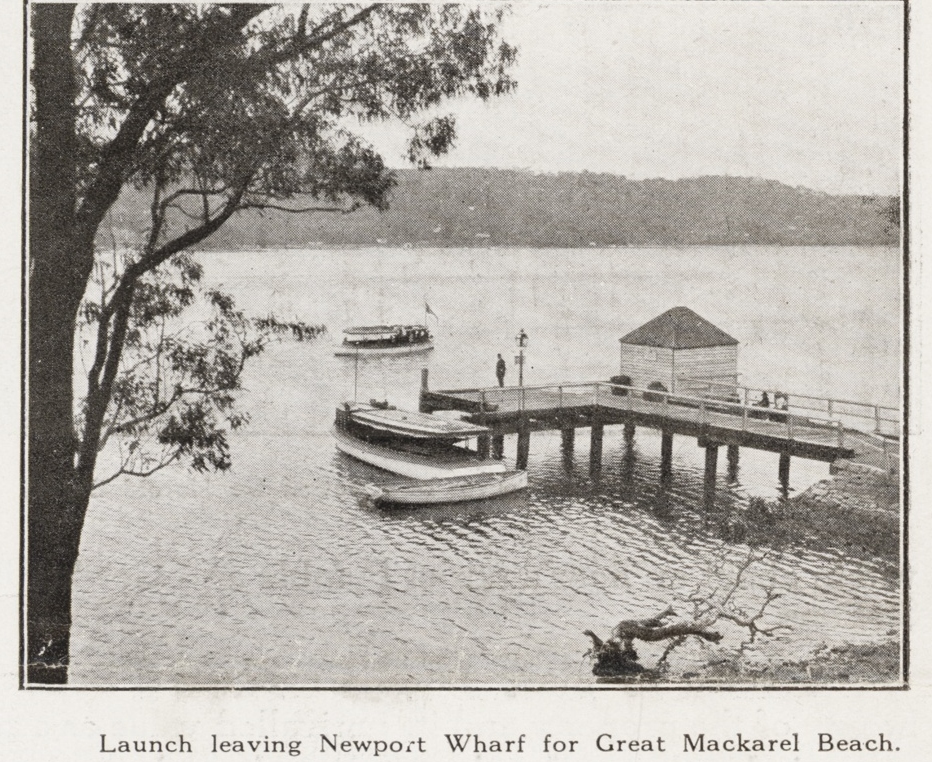
.jpg?timestamp=1639103479073)
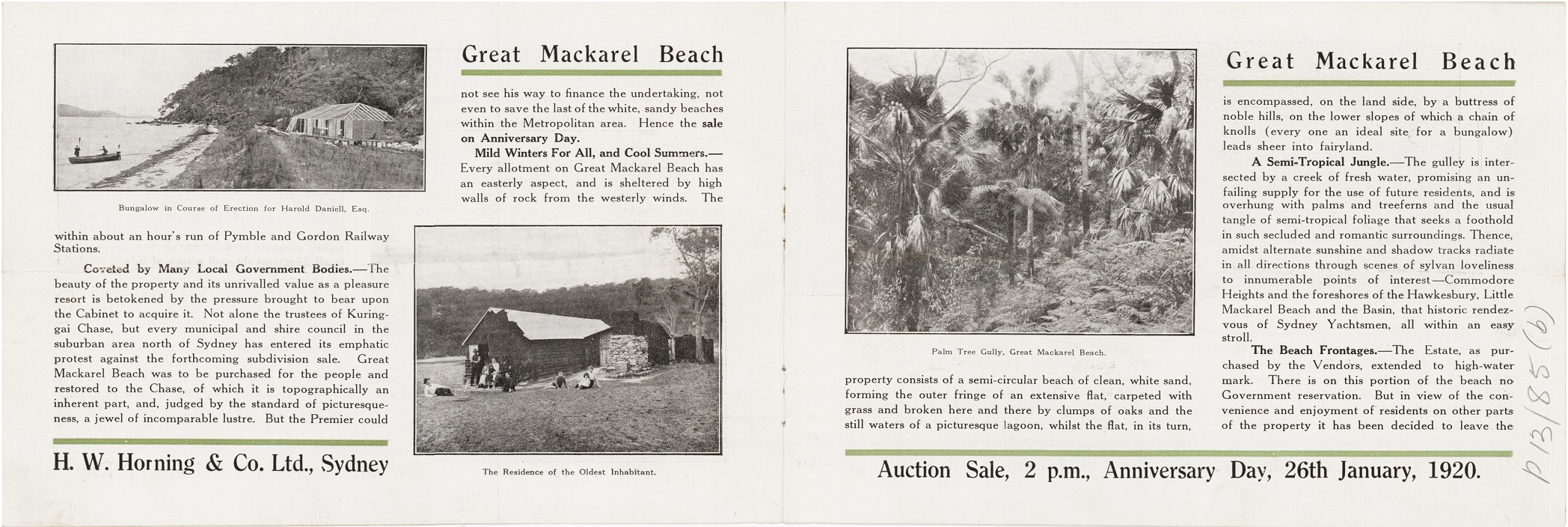
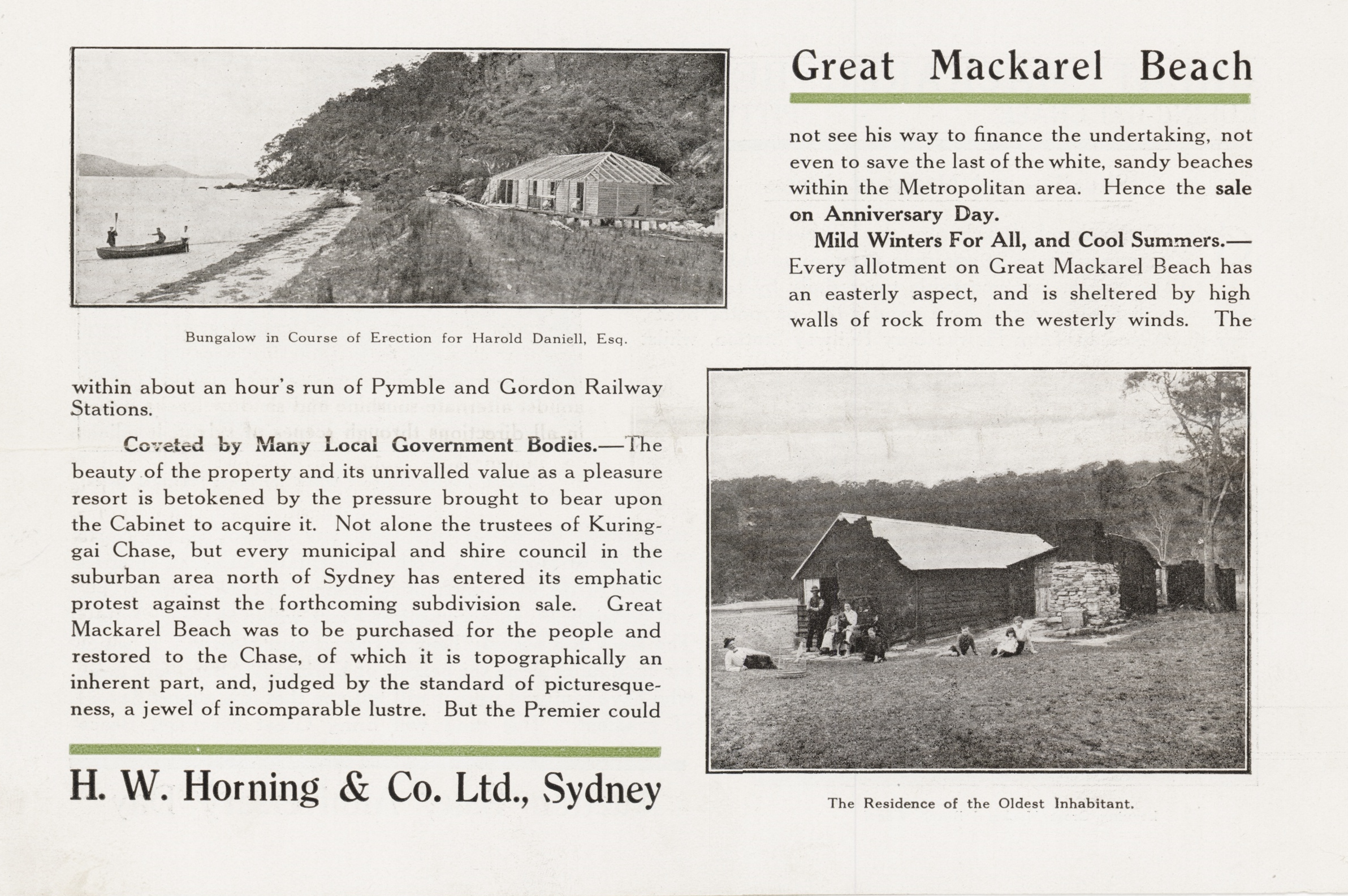
.jpg?timestamp=1639104107923)
.jpg?timestamp=1639104142844)
.jpg?timestamp=1639104171543)
.jpg?timestamp=1639104200687)

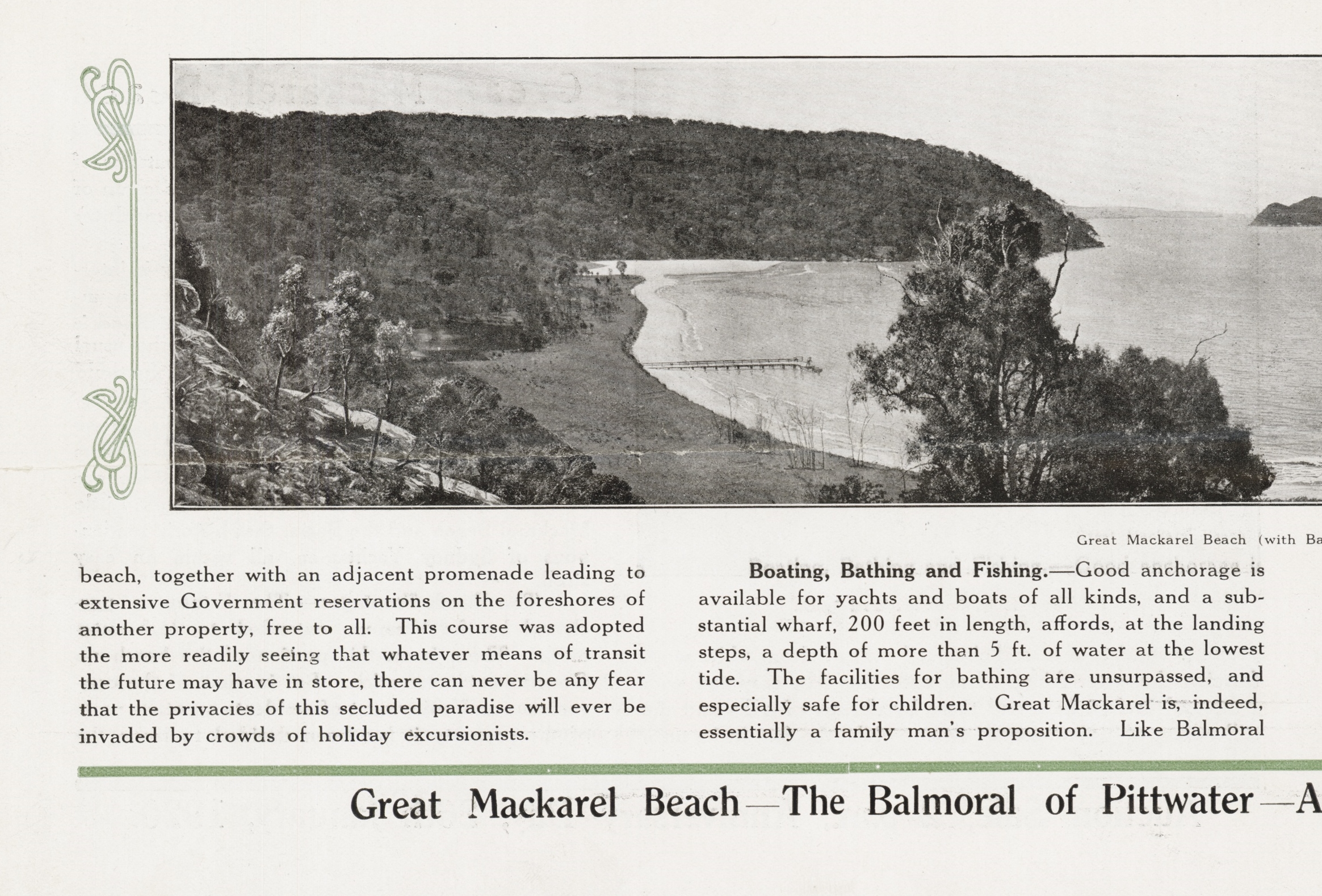
.jpg?timestamp=1639104573690)

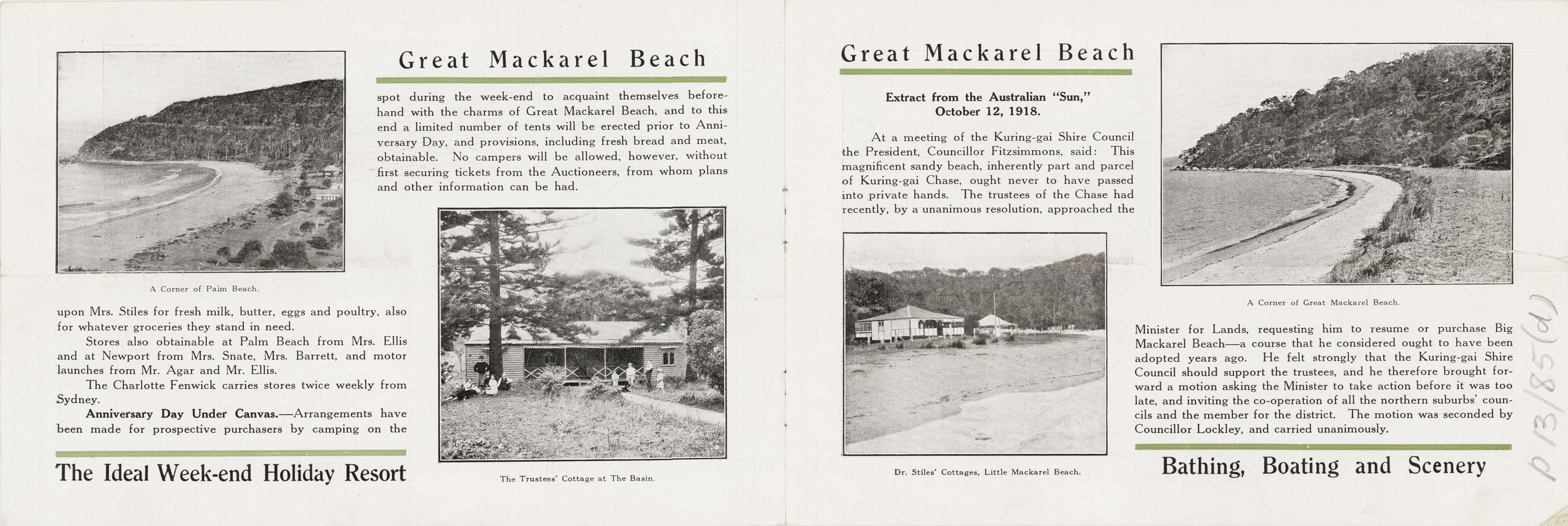
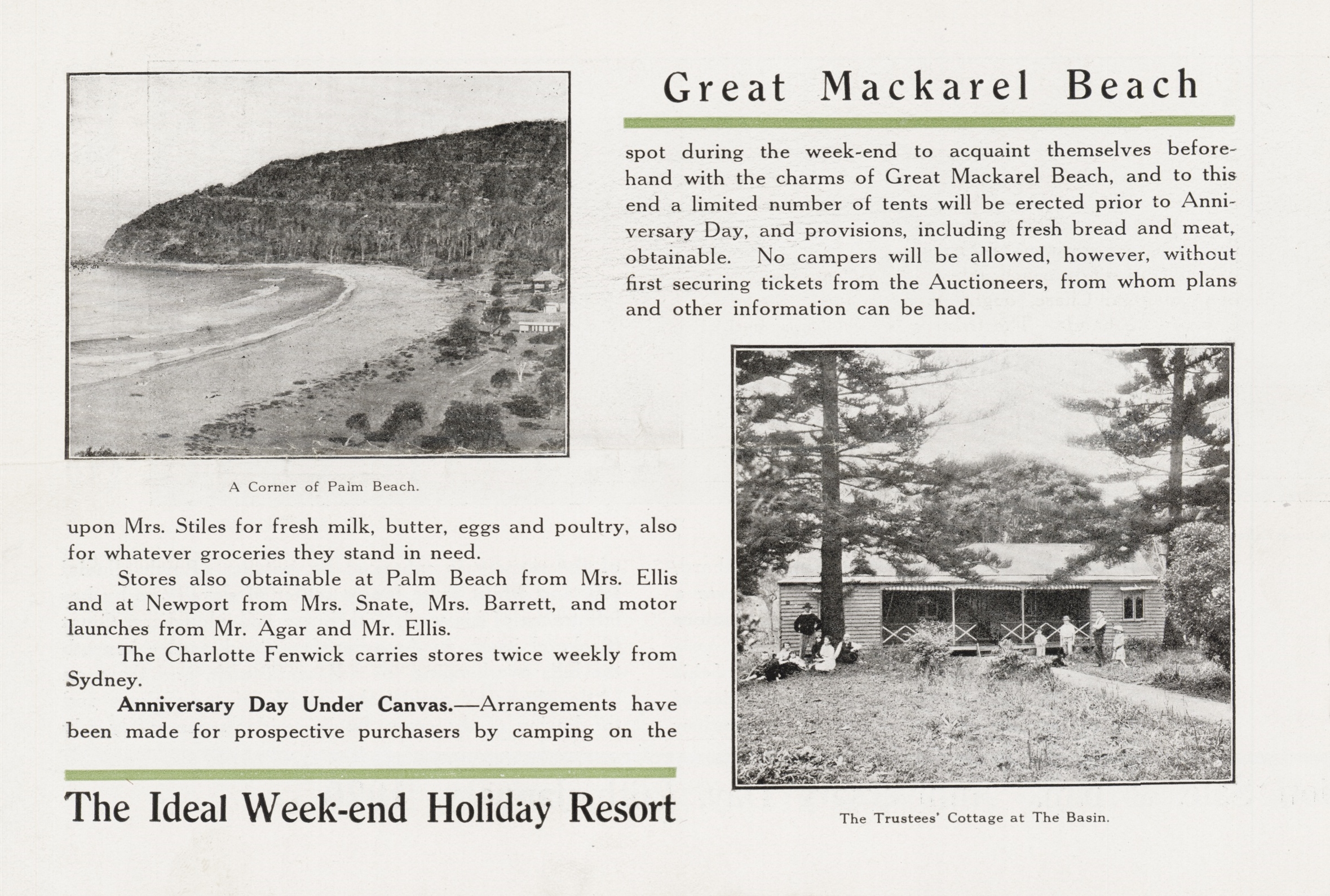
.jpg?timestamp=1639105157420)
.jpg?timestamp=1639105203839)
.jpg?timestamp=1639105231309)
.jpg?timestamp=1639105260191)
.jpg?timestamp=1639105289102)
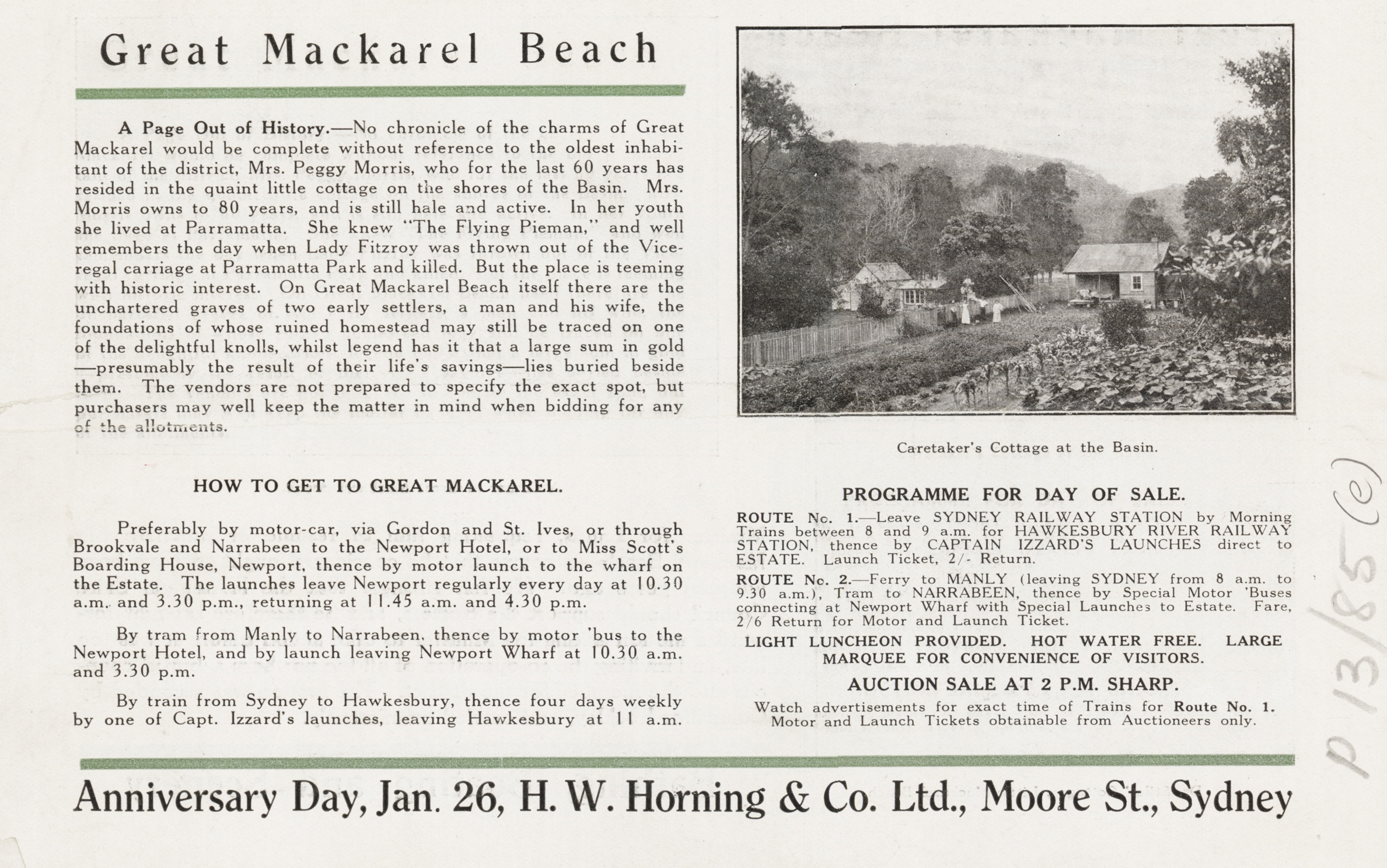
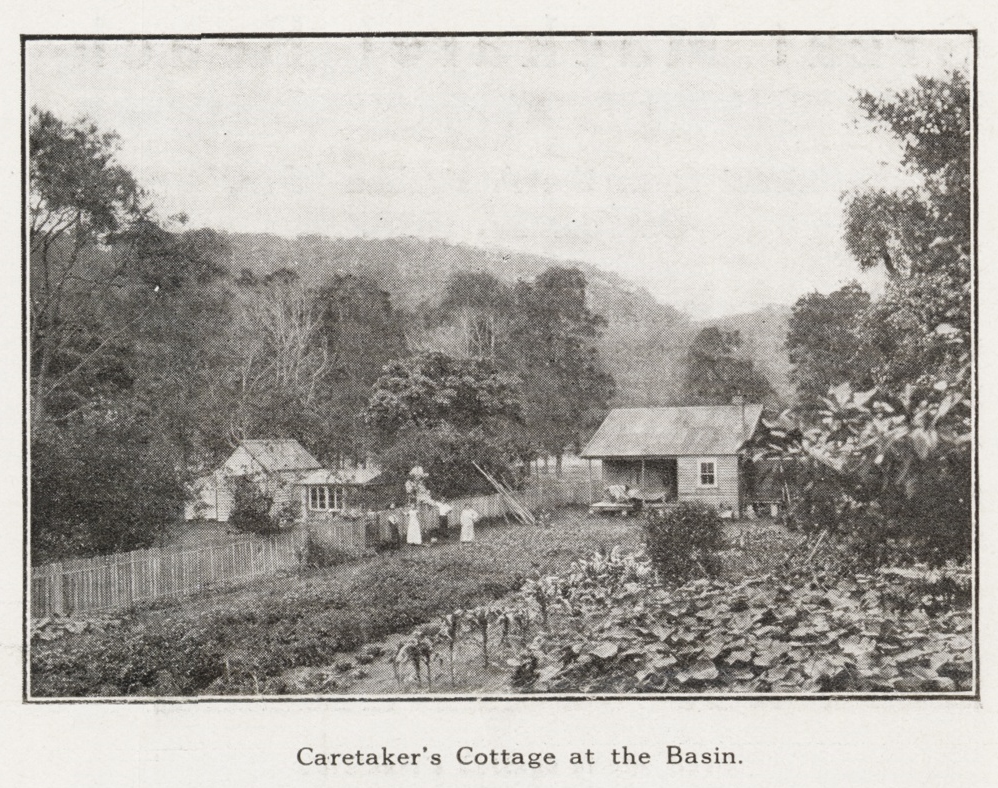
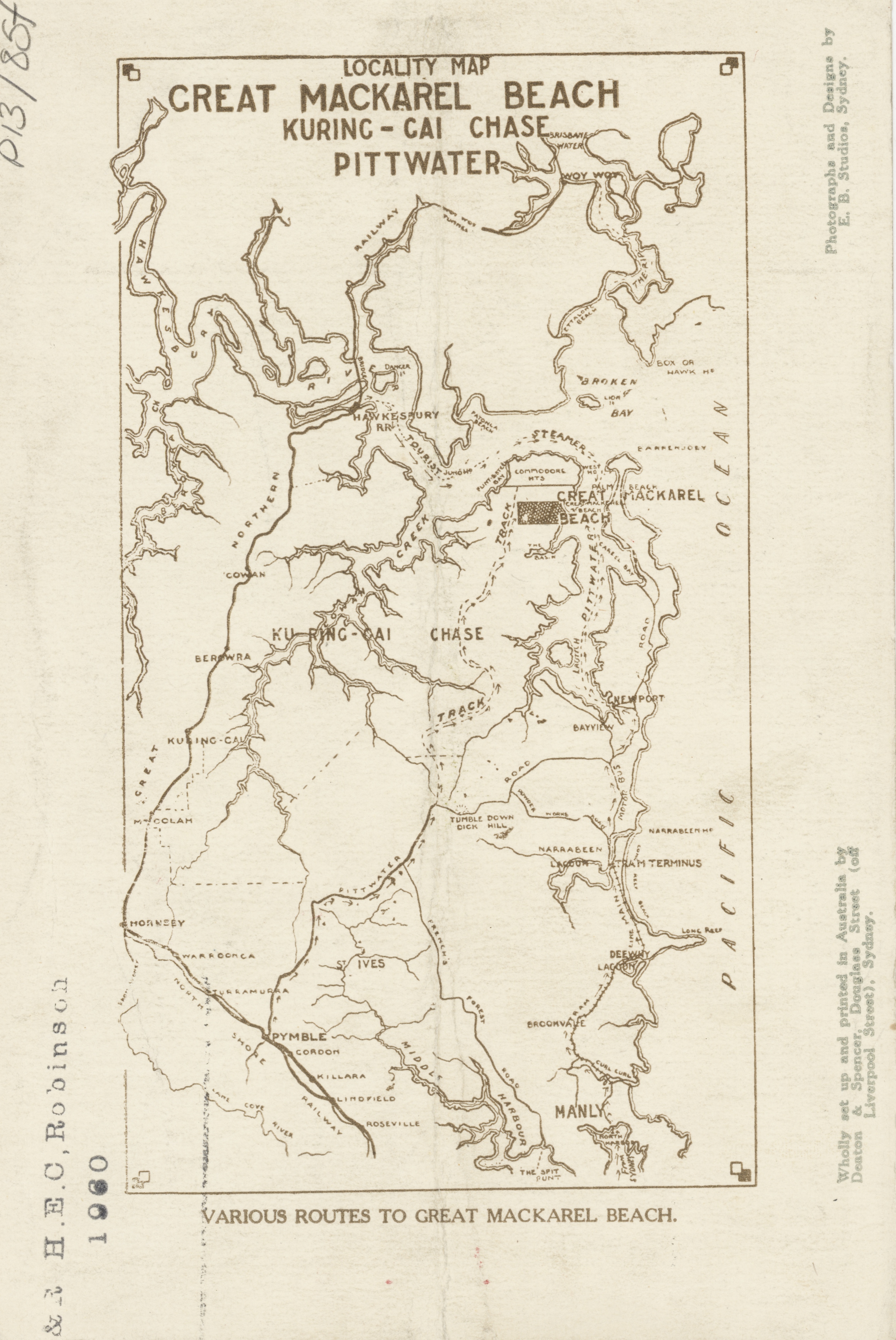
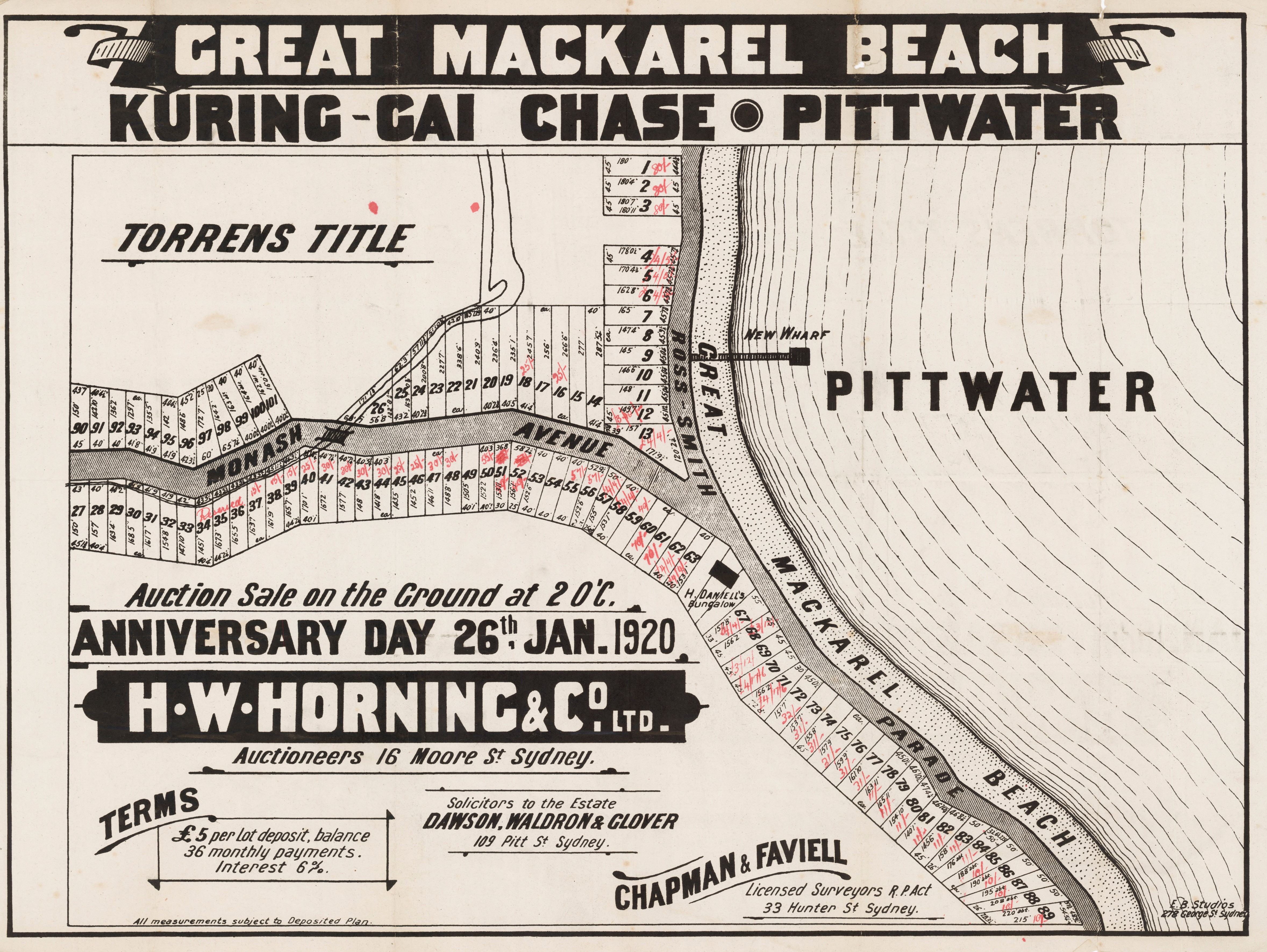
.jpg?timestamp=1568756645634)
Great Mackerel Beach Kuring-Gai Chase, Pittwater - Monash Av. and Ross Smith Crescent - 1920 showing those sold - Item No.: c053460063, and section from showing H. Daniell's bungalow, from Pittwater Subdivisions Album, courtesy State Library of NSW
The report of how many sold:
PROPERTY SALES.
H. W. Horning and Co., Ltd., reports having sold by public auction, on the ground, 39 lots of the Great Mackerel Beach Estate, Kuring-gai Chase, at prices ranging from 10/ a foot to £4/17/6 per foot. Total sales, £2950. PROPERTY SALES. (1920, January 27). The Sydney Morning Herald (NSW : 1842 - 1954), p. 8. Retrieved from http://nla.gov.au/nla.news-article15886180
The addition of 'Diggers Crescent' was part of the January 1922 land sales. Warringah Shire Council Minute of Meetings records:
This advertisement includes a bungalow residence of five rooms, (H. Daniell's ?) and a description of that structure, as well as the new addition of 'Digger's Crescent':
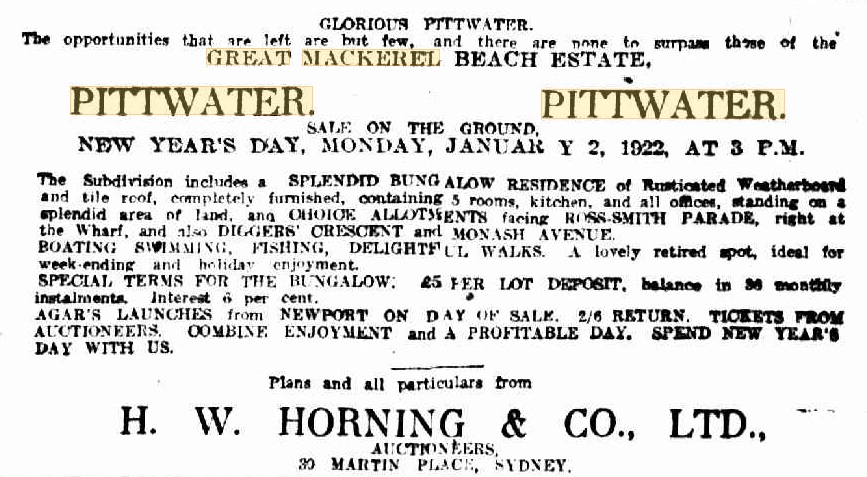
Advertising (1921, December 21). The Daily Telegraph (Sydney, NSW : 1883 - 1930), p. 13. Retrieved from http://nla.gov.au/nla.news-article239704453
Ernest James Blackwell and his wife had sons; Harold James (born 1905), Norman Ernest (born October 19th, 1898 - served in WWII), Clive De La Tour (born 26/02/1893 in Queensland), Stanley William (born 1892), and Eric De La Tour (born 1890). Their daughters: Vera (born 1895), Elizabeth De La Tour (born 1902), Evelyn M (born 1903) Eleanor C (born 1904). The De la Tour added into some of their children's names comes from Ernest's family in England.
Clive, a Dentist, enlisted in January 1915 and was assigned to the 3rd Australian General Hospital when 22 years and 5 months of age. He left Australia on the 14th of April, 1915. His father's address then was 'Linwood', Finlay Avenue, Chatswood. He went to Alexandria in 1915-1916 - had the mumps and was in hospital for a while, joined the 1st Light Horse Regiment on the 17th of December 1916 (? - perhaps mixed up with his brother Eric), was sent into France in April 1917 and was back in the Dental Unit then, to England in January 1918 and returned to Australia in October 1918. He was discharged on February 19th, 1919.
Eric, a Grazier, enlisted on March 3rd, 1915 and was assigned to the 1st Light Horse and was sent into Gallipoli by October 1915. In 1916 the 1st Light Horse were in Egypt and served in Cairo, in Moascar. The 1st Light Horse Brigade was a mounted infantry brigade of the Australian Imperial Force (AIF), which served in the Middle Eastern theatre of World War I. The brigade was initially formed as a part-time militia formation in the early 1900s in New South Wales and then later in Queensland. In 1914, the brigade was re-constituted as part of the AIF and was sent to Egypt. Forming part of the New Zealand and Australian Division, during the Gallipoli Campaign it served in a dismounted role between May and December 1915. After being withdrawn to Egypt it served in the Anzac Mounted Division from March 1916 as part of the Egyptian Expeditionary Force, taking part in the Sinai and Palestine Campaign until the end of the war. It was disbanded in 1919.
Eric made it home too and in 1968 he is living in Dee Why and a member of the Dee Why RSL Sub-Branch when James V. Courtney. Hon. Secretary of the branch, is writing to Melbourne requesting his Gallipoli medals be forwarded.
The naming by his father, Ernest Blackwell, and syndicate members, reflects the times these subdivisions were initiated in, the family's own personal experiences and those of the nation around them. Mr. Blackwell was clearly an A.I.F. (Army) man:
Pittwater
There is a patriotic atmosphere about the Great Mackerel Beach Estate, at Pittwater. The subdivisional streets are named Diggers'-crescent, Monash-avenue, and Ross Smith parade.
There were 128 allotments on the estate, of which 63 have been sold, all suitable for cottages or bungalows. Several have extensive depths and could be laid out in an attractive garden scheme. The estate is right at the beach, after which It is named. Only Ross Smith-parade Intervenes.
A new wharf has been built upon the beach, and is used for a launch service to Newport and the Hawkesbury River. The required deposit is £5 per lot. H. W. Horning and Co., auctioneers. HOLIDAY SALES (1921, December 28). The Sun (Sydney, NSW : 1910 - 1954), p. 9 (FINAL RACING). Retrieved from http://nla.gov.au/nla.news-article223493914
After WWI, Mr. Blackwell, the gentleman who led the syndicate to subdivide this beautiful paradise welcomed home sons who had served at Gallipoli, Egypt and in France. He himself had joined the Australian contingent to the Sudan in 1885 as a correspondent - but who and what inspired the names of the three Great Mackerel Beach streets in late 1919 and in 1920?
The word 'Diggers' is an Australian military slang term for soldiers from Australia and New Zealand. Evidence of its use has been found in those countries as early as the 1850s, but its usage in a military context did not become prominent until World War I, when Australian and New Zealand troops began using it in the Gallipoli campaign and on the Western Front around 1916–17. Evolving out of its usage during the war, the term has been linked to the concept of the Anzac legend, but within a wider social context, it is linked to the concept of "egalitarian mateship".
General Sir John Monash, GCMG, KCB, VD ( June 27 1865 – October 8 1931) was a civil engineer and an Australian military commander of the First World War. He commanded the 13th Infantry Brigade before the war and then, shortly after its outbreak, became commander of the 4th Brigade in Egypt, with whom he took part in the Gallipoli campaign. In July 1916 he took charge of the newly raised 3rd Division in northwestern France and in May 1918 became commander of the Australian Corps, at the time the largest corps on the Western Front. The successful allied attack at the Battle of Amiens on 8 August 1918 was planned by Monash and spearheaded by British forces including the Australian and Canadian Corps under Monash and Arthur Currie. Monash is considered one of the best allied generals of the First World War and the most famous commander in Australian history.
For his services during the war, and in addition to his creation as a Knight Commander of the Order of the Bath, Monash was appointed as a Knight Grand Cross of the Order of St Michael and St George on 1 January 1919. He also received numerous foreign honours – the French appointed him a Grand Officer of the Légion d'honneur and awarded him the Croix de Guerre, the Belgians appointed him a Grand Officer of the Order of the Crown (Grand-Officier Ordre de la Couronne) and awarded him the Croix de Guerre, and the United States awarded him the Distinguished Service Medal. The Australian Government honoured Monash with promotion to the full rank of general explicitly “in recognition of his long and distinguished service with the Australian military forces” on the 11th November 1929.
He returned to Australia on December 26th 1919 to an enthusiastic welcome.
Sir John Monash died in Melbourne on 8 October 1931 from a heart attack, and he was given a state funeral. An estimated 300,000 mourners, the nation's largest funeral crowd to that time, came to pay their respects. After a Jewish service, and a 17-gun salute, he was buried in Brighton General Cemetery. In a final sign of humility, despite his achievements, honours and titles, he instructed that his tombstone simply bear the words "John Monash". He was survived by his daughter, Bertha (1893–1979).
The Monash Club at Ingleside is another local place named in tribute for this gentleman.
Monash Country Club
The Monash Golf Club, in existence since 1933, has been dissolved, and the Monash Country 'Club has been duly constituted and formed.
The following gentlemen were elected as first office-bearers:
Patron, Brigadier J. Steigrad, C.B.E., President, Hyman Eizenberg Esq., Captain, B. Chirlain Esq., Treasurer, H. Don Esq., Committee: D. Abbott Esq., H. Joseph Esq., S Moss Esq., R. Michaelis Esq., E. Rheuben Esq., Dr. M. Richmond. Trustees: Hon. L. S. Snider, M.L.C.,- -J. W. Catts Esq., P. Rheuben Esq, Secretary Manager, Mr. S. Davis; Hon. Handicapper, Mr. H. Adelstein.
It is anticipated that play will commence on the course about March, 1950. Monash Country Club (1949, October 20). The Hebrew Standard of Australasia (Sydney, NSW : 1895 - 1953), p. 10. Retrieved from http://nla.gov.au/nla.news-article131102280
His memory and service is also shown in the naming of Monash University, a public research university in Victoria, the City of Monash, a local government area in Melbourne, the Division of Monash, a Federal electoral division covering part of Gippsland, Victoria, the Monash Medical Centre, a teaching hospital in Melbourne (and location of his bust, which was originally located in former SECV town Yallourn), Monash Freeway, a major urban freeway in Melbourne, John Monash Scholarships, annually awarded to outstanding Australians for postgraduate study overseas, John Monash Science School, a specialist science secondary school in Clayton, Victoria, the Town of Monash in South Australia, Kfar Monash ("Monash village") in Israel, the suburb of Monash in Canberra, the Sir John Monash Stakes is a Group 3 horse race run each July at Caulfield Racecourse, Sir John Monash Drive in Caulfield East, Victoria, the 306 Monash Army Cadet Unit, the Sir John Monash Centre, commemorative interpretive centre at Villers-Bretonneux, France and General Monash Branch - Royal Canadian Legion (Branch #115) Winnipeg, Mb, Canada.
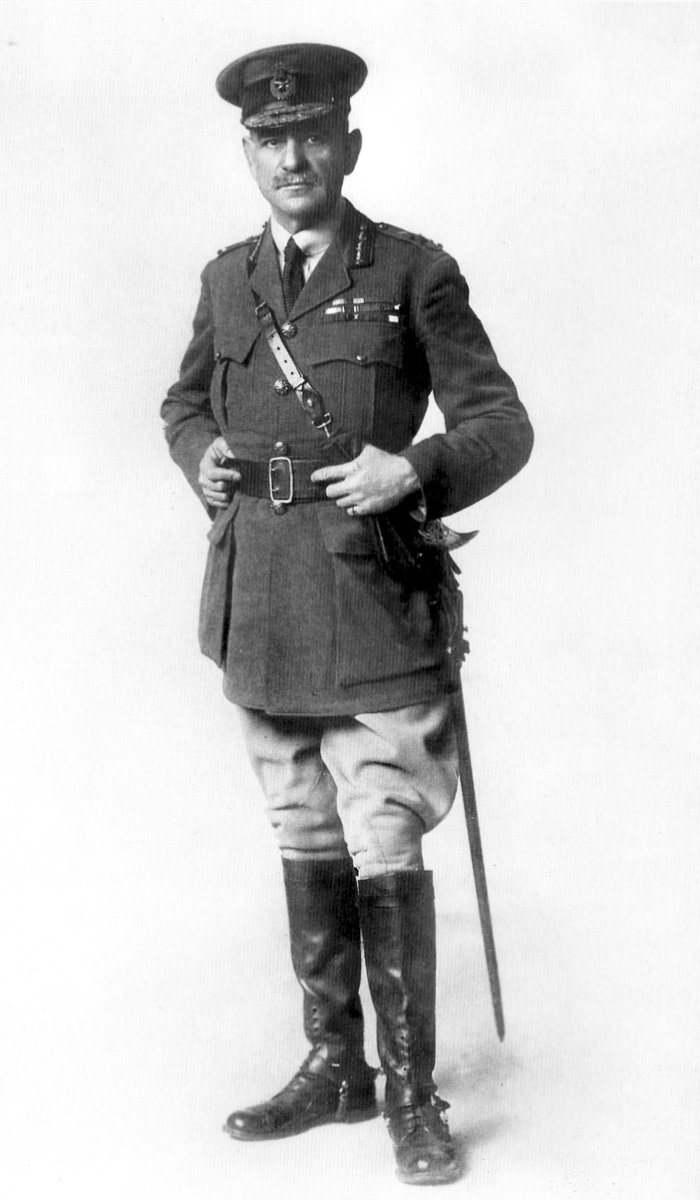
John Monash portrait- 1918
Sir Ross Smith is an Australian war hero and pioneering flyer. Serving with the AIF, Smith made many distance flights and flew the first England-to-Australia route in 1919.
Sir Ross Macpherson Smith, KBE, DFC (and two Bars), MC (and Bar), AFC (1892–1922) had served in the cadets and the militia before he left Australia as a sergeant in the 3rd Light Horse Regiment in October 1914; he went to Gallipoli the following year, landing May 15th, 1915. He was later commissioned and was at the battle of Romani (in the Sinai) in August 1916.
The next year he volunteered for the Australian Flying Corps. Flying with No. 1 Squadron AFC, Smith took part in attacks, aerial photography missions, and bombing raids on Turkish forces. On one occasion he landed in the face of the enemy to rescue a downed comrade. During his extensive war service he was twice awarded the Military Cross, received the Distinguished Flying Cross three times, as well as the Air Force Cross.
A gifted flyer, Smith became experienced in flying his squadron’s twin-engined Handley Page 0/400 bomber. Smith was pilot for T. E. Lawrence (Lawrence of Arabia) and fought in aerial combat missions in the Middle East. He is mentioned several times in Lawrence's book, Seven Pillars of Wisdom, Chapter 114.
It is likely that Eric de la Tour Blackwell either met or saw Captain Ross Smith in action, and his next deeds would not have been missed by his ex-journalist father.
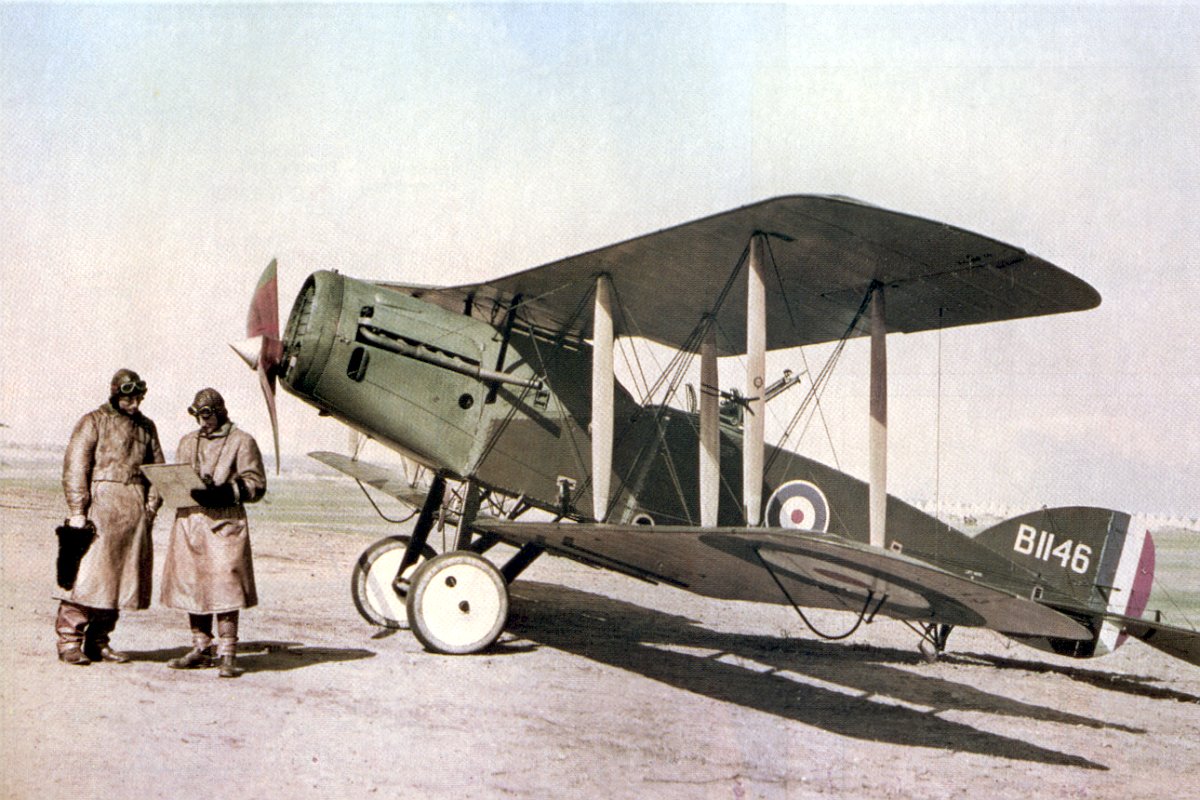
Capt. Ross Smith (left) and observer with their Bristol F.2B Fighter, in Palestine, February 1918. Photo is by Frank Hurley - The photo is a colour Paget Plate.
While still with the flying corps, he made pioneering flights from Cairo to Calcutta, and from Calcutta to Timor.
On November 12th 1919, assisted by his brother Keith and two mechanics, Wally Shiers and Jim Bennett, he set out to fly from England to Australia in a large Vickers Vimy bomber. This was an epic 28-day flight, completed at an average speed of 137 kilometres per hour, but not without mishap. On their arrival, landing in Darwin, Australia, on Wednesday, December 10th, the pioneering flyers were welcomed home as national heroes;and their £10,000 prize money, for being the first to fly from England to Australia, was shared equally. The two brothers were knighted.
In April 1922, while preparing for a record-breaking around the world flight, Smith and Bennett were killed in a crash. Keith Smith witnessed the death of his brother, who was not yet 30. Their famous Vimy aircraft was displayed at the Australian War Memorial, but is now in the Smiths’ home town, Adelaide.
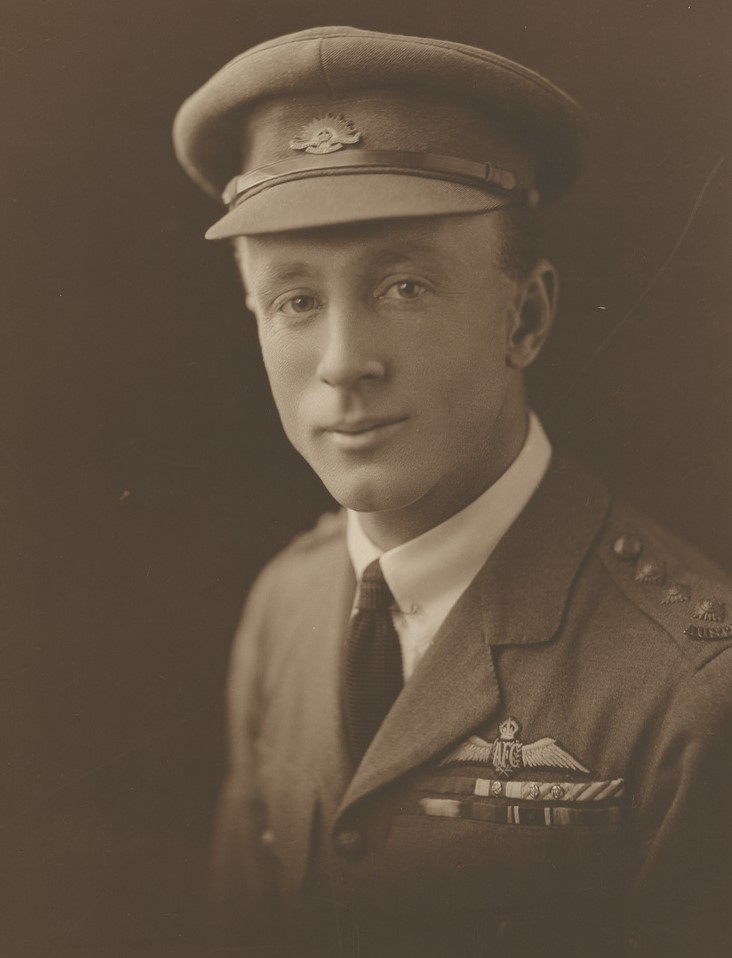
Ross Macpherson Smith (1892-1922), by unknown photographer, c.1920 - courtesy State Library of South Australia, Item No.: 6101
Air mail envelope: Ross Smith carried the first air mail from Britain to Australia. This envelope has a commemorative label designed by the war artist George Benson. It was cancelled with a stamp “First Aerial Mail – Great Britain to Australia – Received 26 February 1920”.
The second 'Digger's Crescent' subdivision was slated for January 2nd, 1922, until a storm came along and made access, and the likelihood of people being on the grounds to buy lots, unlikely.
The charms of Pittwater will be difficult to exaggerate, and the growth of the resort seems to be assured. Some very successful sales have been held in this locality, and another attractive subdivision, known as the Great Mackeral Beach estate, will be offered by Messrs. H. W. Horning and Co. to-morrow, Monday, afternoon. The estate has the distinct advantage of being right at the beach, where a new wharf has been built, which is used for a launch service to Newport and the Hawkesbury River. The subdivision includes a fine bungalow residence and a number of well-planned allotments, admirably suited for bungalow homes or week-end cottages. Arrangements have been made by the agents for launches to leave the Newport wharf for the convenience of those who will prefer to reach the scene of the sale from this point. TO-MORROW'S SALES (1922, January 1).Sunday Times (Sydney, NSW : 1895 - 1930), p. 5. Retrieved from http://nla.gov.au/nla.news-article128213237
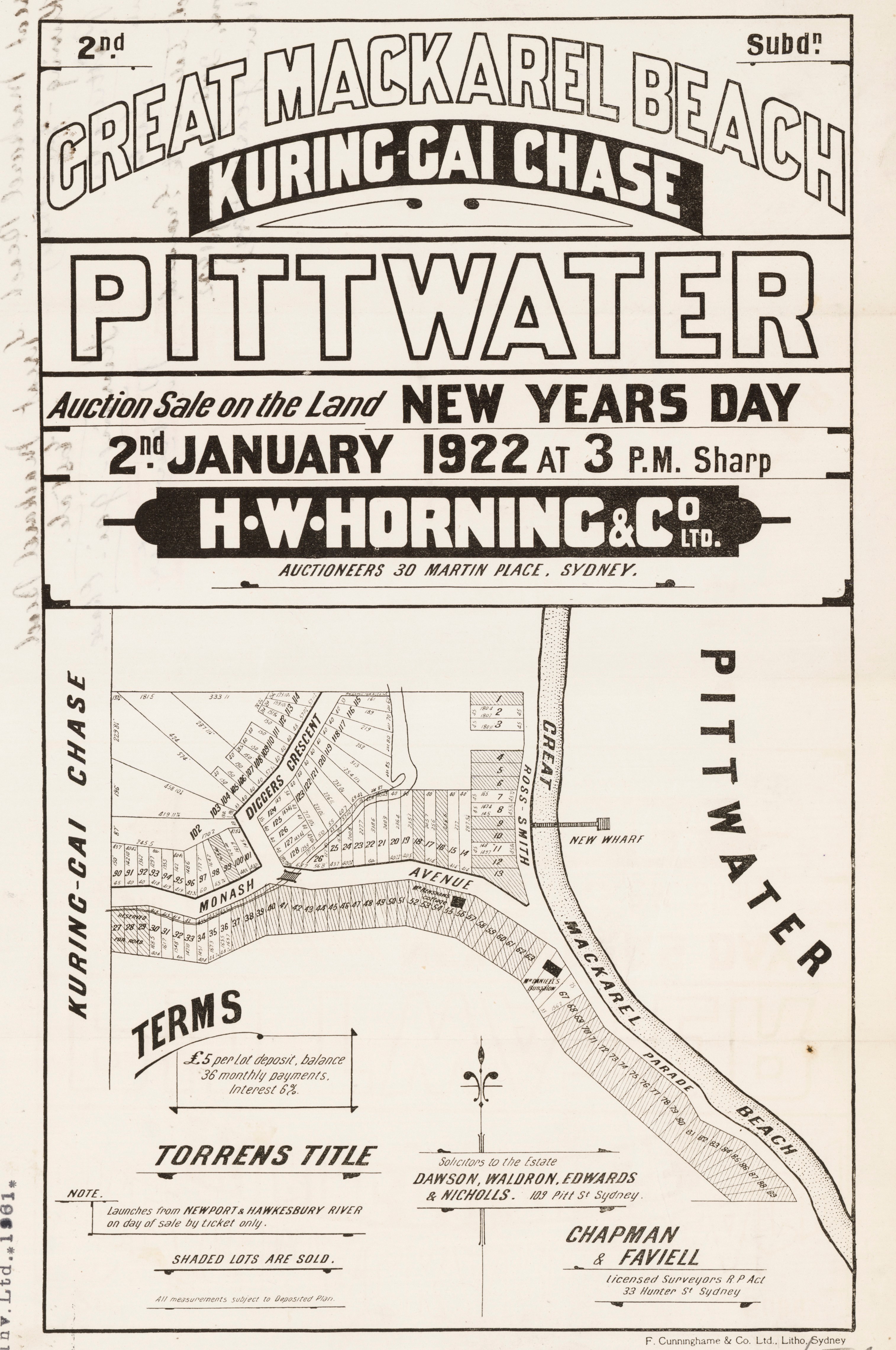
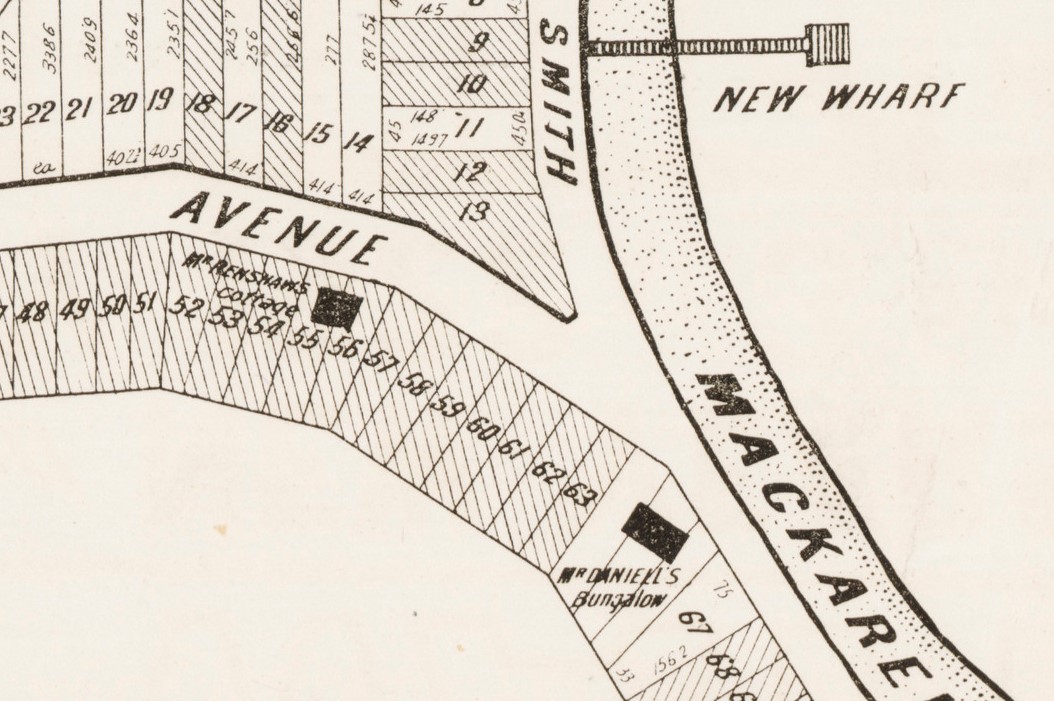
Great Mackeral 2nd subdivision 1922 - B&W version. Item No.: c053460058 - and sections from showing residences of Renshaw cottage and Daniell bungalow,from Pittwater Subdivisions Album, courtesy State Library of NSW
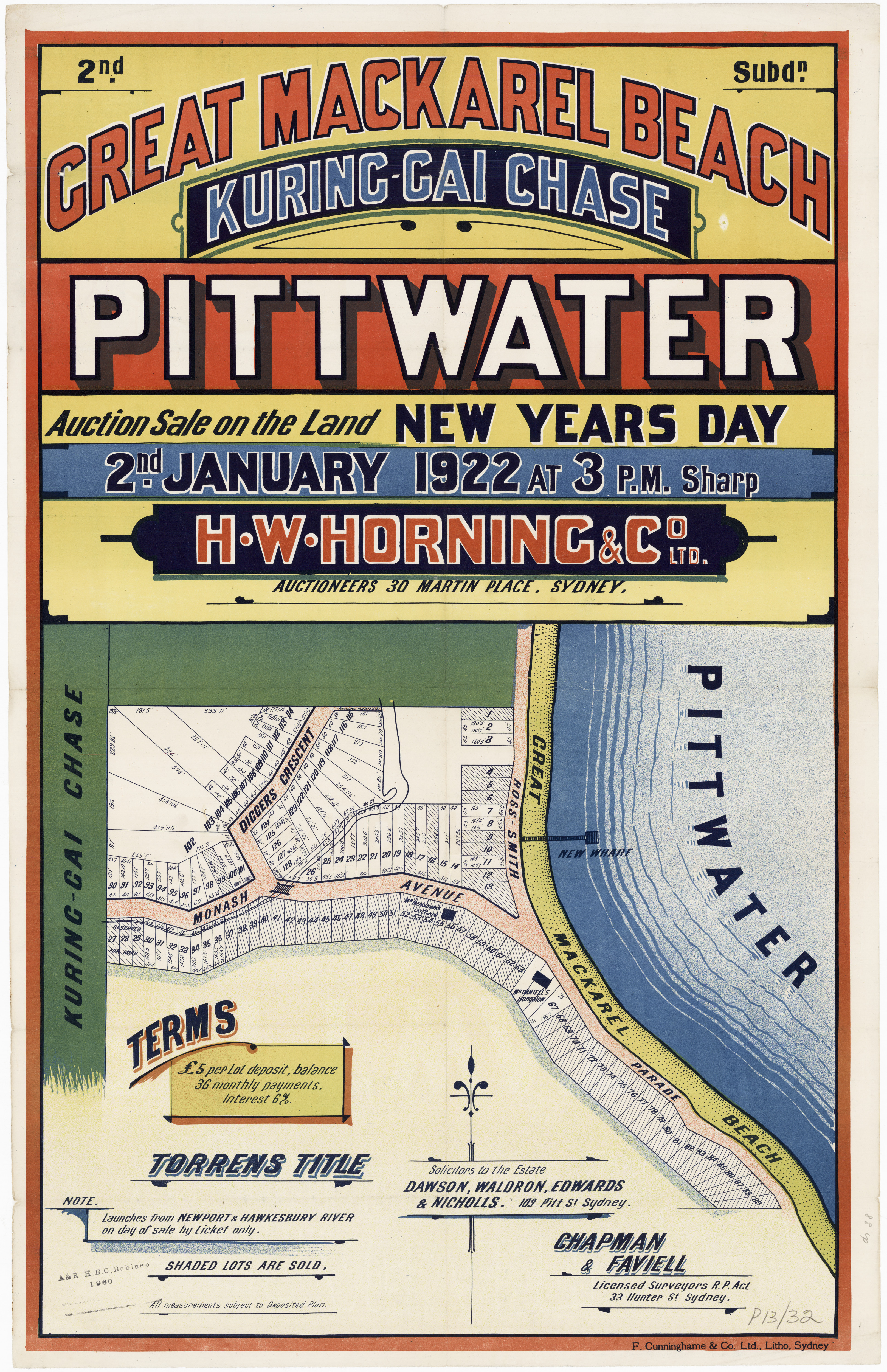
Great Mackerel beach Kuring-Gai Chase, Pittwater - 2nd subdivision 1922. Item No.: c053460033, from Pittwater Subdivisions Album, courtesy State Library of NSW - shaded lots are already sold.
Great Mackerel Beach
The Great Mackerel, after which this Pittwater estate is named, is probably a fisherman's yarn, as fishermen congregate in this vicinity and the output of yarns is terrific. There are 62 lots in the estate, fronting on Diggers'-Crescent, Monash-avenue and Ross Smith-parade. The beach itself is separated from the estate by the parade. The whole expanse of Pittwater is in view of the land, which has been cut into lots ranging from 33 feet to 75 feet in frontage. Some of them have large areas, the majority would suit the small holder. The new wharf is right at the estate. Launches will run from Newport and the Hawkesbury River to-morrow, but are available by ticket only. A deposit of £5 per lot Is required, H. W. Horning and Co.,. auctioneers. MANLY TO-MORROW (1922, January 6 - Friday). The Sun (Sydney, NSW : 1910 - 1954), p. 2 (CRICKET EDITION). Retrieved from http://nla.gov.au/nla.news-article225215102
The Blackwell syndicate loses their special lease:
FORFEITURE OF A SPECIAL LEASE.
IT is hereby notified, for general information, that the special Lease specified hereunder is declared forfeited, iti accordance with the, provisions of the Grown Lands Consolidation Act, 1913.
The forfeiture will take effect at the expiration of thirty clear days from this date.
W. E. WEARNE, Minister for Lands.
ffo. of Papers, Ms. Lb. 1922-11216
No. of Lease.
1919-8, Metropolitan 1
Name And Address of Lessee. Blackwell, Ernest, of Macquarie-street, Sydney.
Situation, and Area of Land. County Cumberland, parish Broken Bay, fronting portion 9 at Great Mackerel Beach, Pittwater. Area, about 6 perches. Annual Rent. £ s. d. 5 0 0. Reason for Forfeiture. Non-payment of rent. Shire; Warringah. FORFEITURE OF A SPECIAL LEASE. (1922, September 22). Government Gazette of the State of New South Wales (Sydney, NSW : 1901 - 2001), p. 5259. Retrieved from http://nla.gov.au/nla.news-article222060218
LOCAL GOVERNMENT ACT, 1919.
PROCLAMATION.
W. E. DAVIDSON,
Governor.
I Sir Walter Edward Davidson, the Governor of the State of New South Wales, with the advice of the Executive Council, in pursuance of the Local Government Act, 1919, do hereby declare to be a public wharf the wharf known as "Great Mackerel Beach Wharf ' and described as having an area of about 6 perches, fronting portion 9, parish of Broken Bay, county of Cumberland, and vest the control thereof in the Warringah Shire Council.
Signed and sealed at Sydney, this fourth day of April, 1923.
By His Excellency's Command,
J. C. L. FITZPATRICK. GOD SAVE THE KING! LOCAL GOVERNMENT ACT, 1919. (1923, April 13). Government Gazette of the State of New South Wales (Sydney, NSW : 1901 - 2001), p. 1859. Retrieved from http://nla.gov.au/nla.news-article225022518
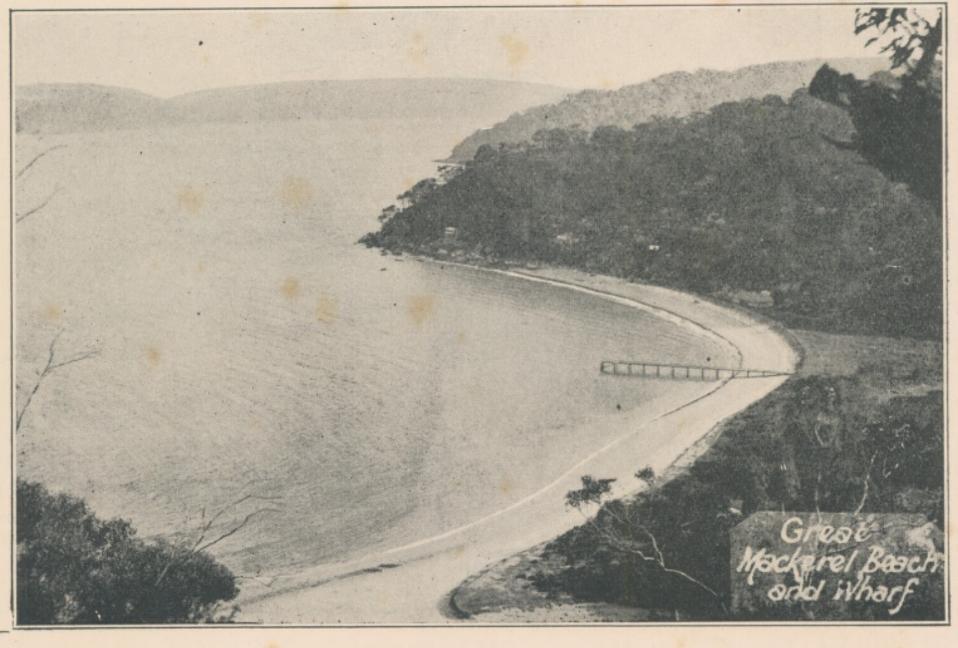
Stafford & Co. (1929). The beautiful Riviera estate / Stafford & Co. Ltd Retrieved from http://nla.gov.au/nla.obj-465408584
"HERITAGE." Plans for Crowd Scenes. GOVERNOR PHILLIP'S LANDING.
More than a hundred men. most, of them unemployed, have been given work for to-day as "extras" in the Australian picture, "Heritage."' which Mr. Charles Chauvel is producing for Expeditionary Films. Ltd. Seventy of the men were selected in Sydney, and a large number in the district about Pittwater. Today, all these will be transported to Great Mackerel Beach, where they are to take part in scenes depicting the landing of Governor Phillip.
The settings for Governor Phillip's camp have been faithfully reproduced from sketches prepared by Mr. Ray Lindsay from original sources in the Mitchell Library and elsewhere. Much difficulty has been experienced, however, in damming the small stream which flows from the hills to the beach, and which is Intended to represent the historic Tank Stream of Circular Quay. Several hundred bags, to be filled with sand for that purpose, were sent from Sydney yesterday. Hitherto, the tides have moved all the sandbags available at Pittwater.
It is hoped to make a start with the crowd scenes at Pittwater this morning. The film should be sufficiently advanced by the end of the week to be taken to Melbourne by Mr.Chauvel for "cutting." RE-ENACTING SCENES FROM THE FIRST SETTLEMENT. (1934, October 25). The Sydney Morning Herald (NSW : 1842 - 1954), p. 16. Retrieved from http://nla.gov.au/nla.news-article28021154
THAT enterprising couple, the Charles Chauvels, have found the quaintest little beach. In among the rocks and tea-tree, high above Mackerel Beach, near Pittwater, from which they will be able to keep an eye on the extras to be utilised in finishing their film, "Heritage," and, incidentally, the social-lights across the bay at Palm Beach.
And what do you think they found there? Pasted on the front verandah was a large photograph of a group of those luscious Mack Sennett bathing girls, just too, too Mae Westy for words. It quite brought Charles' 'Hollywood days back to him when he used to scamper round as one of Douglas Fairbanks' publicity men.
Incidentally, this week Pittwater will resound to the commands of Governor Phillip's military, and the curses of his convict men. Nevertheless, Mrs. Chauvel thinks her little pill-box on the hill is the most restful spot since she left the Blue Lagoon in Tahiti. Catty Communications (1934, October 27). Smith's Weekly (Sydney, NSW : 1919 - 1950), p. 21. Retrieved from http://nla.gov.au/nla.news-article235490112
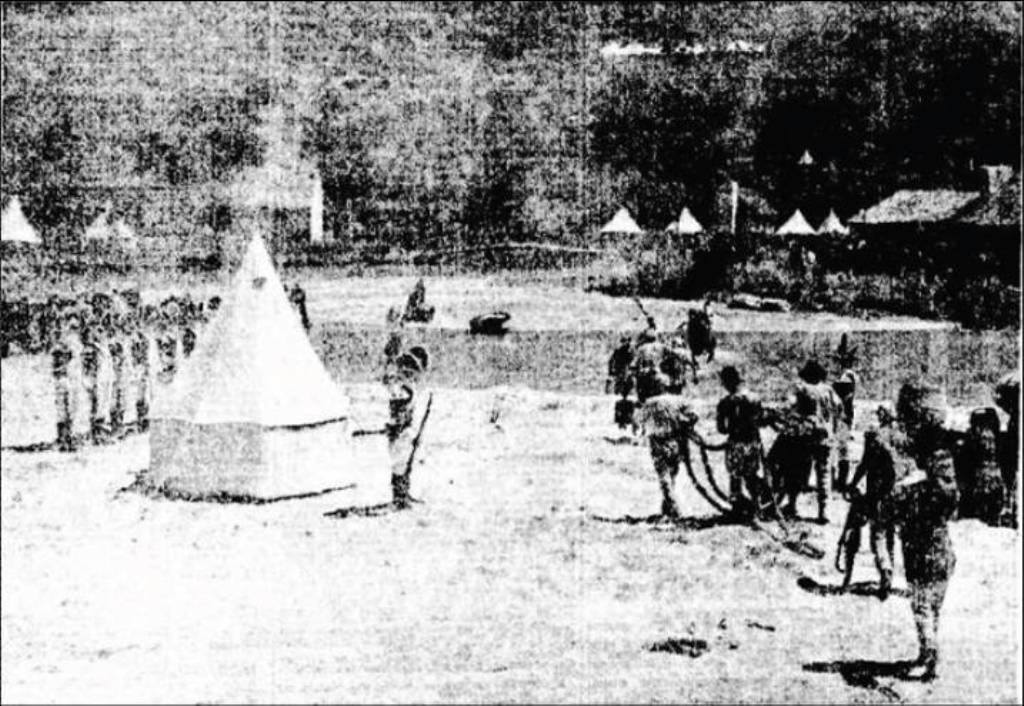
Photograph: RE-ENACTING SCENES FROM THE FIRST SETTLEMENT. (1934, October 25). The Sydney Morning Herald (NSW : 1842 - 1954), p. 16. Retrieved from http://nla.gov.au/nla.news-article28021154 - Visit: Filmed in Pittwater
Heritage was originally conceived in 1933, while Charles Chauvel was organising publicity for his previous film, In the Wake of the Bounty. The Australian government, in a bid to encourage the local film industry, announced the Commonwealth Prize, an award of £2,500 to the best Australian-made film. Chauvel declared his intentions to enter the competition, and conceived a large-scale historical drama, spanning 150 years of Australian history, to maximise his likelihood of winning.
The film was announced in July 1933. It was dubbed an Australian version of Cavalcade and was supported by Herb McIntyre of Universal. It would cover Australian history form the arrival of Captain Cook to the Great Depression. Chauvel announced plans to hold a Miss NSW competition to promote the movie.
By February 1934 the film was called Heritage and registered a script the following month. Production began in April 1934 and went for eight months. Studio scenes were shot at Efftee Studios in St Kilda, Melbourne. Outdoor filming took place in New South Wales and Queensland. Forty aborigines were employed to appear in a scene filmed at Canungra, Queensland. There were also scenes shot at Parliament House in Canberra while Governor Arthur Phillip's landing in Sydney was shot at Pittwater.
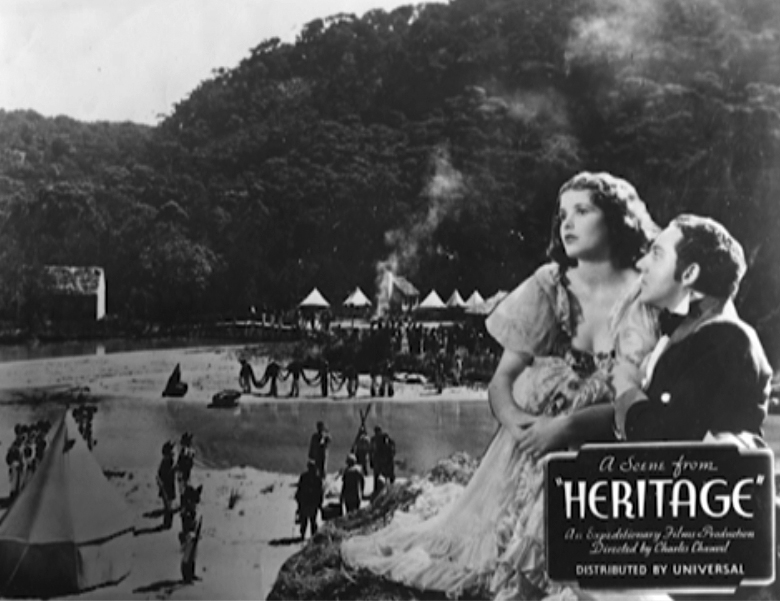
Heritage was first released on 13 April 1935, and distributed by Universal Films through the General Theatres Corporation. Of the thirteen films in contention for the Australian government's Commonwealth Prize, Heritage was awarded the top prize of £2,500. The runner-up films were Ken G. Hall's The Silence of Dean Maitland, in second place (£1,250), and Frank Harvey's Clara Gibbings, in third place (£750). The judges stated that the film "comprised a constructive effort in Australian film development, showing fine pictorial quality and camera work."
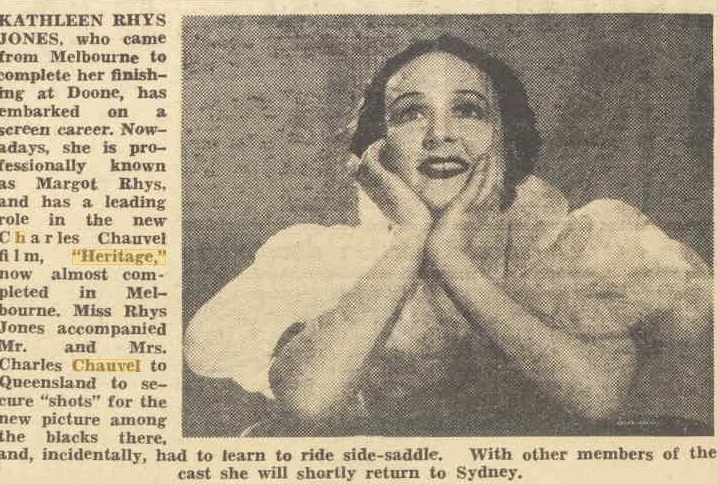
DON'T FORGET... (1934, September 22). The Australian Women's Weekly (1933 - 1982), p. 2 (THE AUSTRALIAN WOMEN'S WEEKLY HOME MAKER). Retrieved from http://nla.gov.au/nla.news-article47810146
W. C. WENTWORTH IN "HERITAGE"
AUSTRALIAN FILM NEAR COMPLETION
An interesting characterisation In "Heritage," the new Charles Chauvel film, now being completed at Pittwater, will be that of W. C. Wentworth, who has been impersonated by Victor Fitzherbert, a well-known actor under the J. C. Williamson management. Mr. Chauvel, who entrusted the role of Governor Phillip to Frank Harvey, and that of Governor Macquarie to Norman French, considers that the Victor Fitzhnrbert impression of Wentworth conveyed by Mr. Fitzherbert is that of a living likeness. Two featured plnyers, Peggy Maguire and Franklin Bennett, are now with Mr. Chauvel at Pittwater, working on the last portion of "Heritage." W. C. WENTWORTH IN "HERITAGE" (1934, October 7). The Sun (Sydney, NSW : 1910 - 1954), p. 9. Retrieved from http://nla.gov.au/nla.news-article230326585
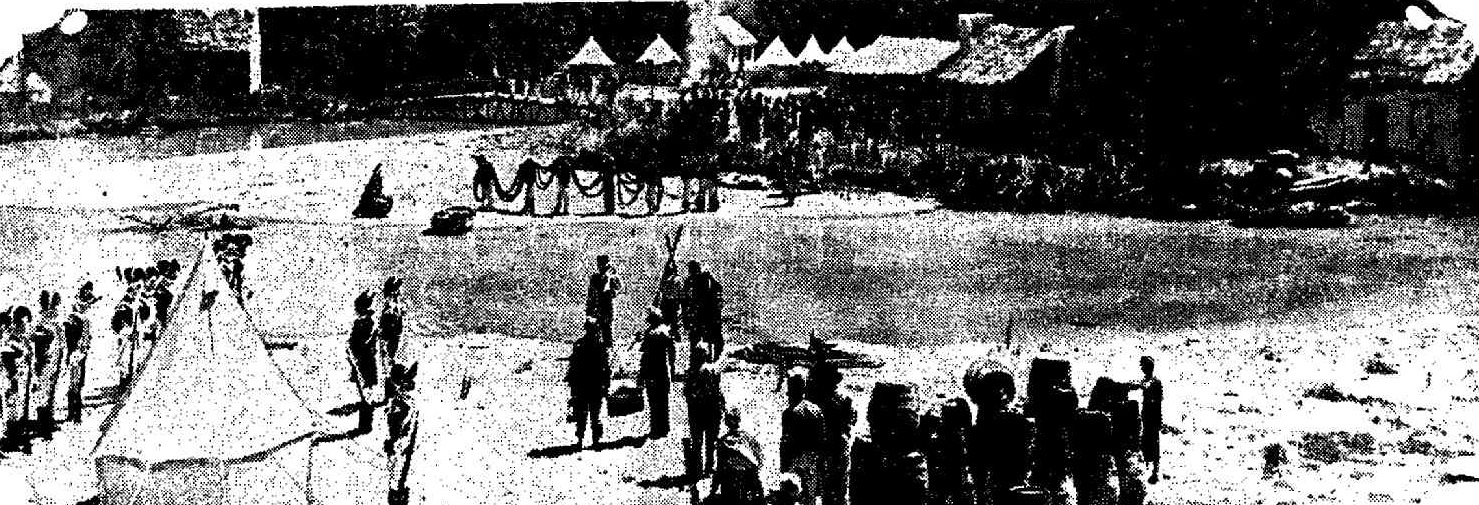
GREAT THINGS FROM SMALL BEGINNINGS FLOW — and certainly Governor Phillip never dreamed of the magnificent nation that would arise from the first landing he made at Pittwater. This is what it looked like— a hundred years and more ago— according to Charles Chauvel, who last week reconstructed in Sydney the scene with hundreds of 'supers,' for his new epic 'Heritage.' Society Mother Faints In Court When Denounced By Relative (1934, October 28). Truth (Sydney, NSW : 1894 - 1954), p. 16. Retrieved from http://nla.gov.au/nla.news-article169333068
GOVERNOR PHILLIP'S CAMP SCENES IN "HERITAGE" FILMED
As a rule. Great Mackerel Beach, Pittwater, is a quiet place. Two week-end cottages stand among trees on a headland at one end of it. At week-ends and on holidays, a few people row across from Palm Beach or come in launches, and picnic among the rocks. Otherwise its solitude remains undisturbed. But last week the place was a hive of activity. Arriving by water at the little jetty, one seemed suddenly to have 'stepped into another century. Blue-coated soldiers of Governor Phillip's day were at drill under their commanding officer. A gang of tattered rapscallions transported block and tackle, oars, and other gear across the shallow stream. Others co-operated in the carrying of a fishing net. A crowd of women, with long hair hanging down their backs, appeared to be storming the doors of two or three huts.
From a distance, all this looked convincing. Then one noticed a fringe of present-day Australian figures, all in seaside costume, straggling on the outskirts. Moreover, there was a high wooden rostrum with a camera perched on it; alongside this camera stood Mr. Chauvel, who is directing the picture, "Heritage," for .Expeditionary Films, Ltd. Through a megaphone, he shouted directions to the soldiery, the women, and the tattered convicts. Mr. Tasman Higgins, the photographer, peered through the lens. Mr. "Chic" Arnold, the assistant director, ran frantically to and fro across the sands. The sun poured down relentlessly. It was hot. Already at midday some of the convicts, who were stripped to the waist, showed ominous red streaks of sunburn. One huge fellow, with a face as rubicund and good humoured as Falstaff's, shrouded the upper part of his person in sacking, and refused to emerge until the camera was about to turn. Yet the blue-coated soldiery in heavy uniforms seemed to be looking enviously at the actors who moved about so lightly clad.
All the "extras" — about 120 of them — had been transported from the city, or from the districts to the north of Manly, specially for the photographing of this scene of Governor Phillip's first camp in Sydney Cove on the banks of the Tank Stream. One detected a few old actors in their ranks; but the great majority were appearing before the camera for the first time. It seemed really remarkable how Mr. Chauvel handled this motley array of humanity (which included some rough and apparently intractable types), and inspired every person with a burning desire to carry the scene in a successful conclusion. In a large scale set of this sort, one forgetful man can spoil the effect by turning his head towards the camera. But no head ever seemed to turn. When Mr. Chauvel asked the camera rostrum should be moved, the convict actors bent them-selves under the weight of the wooden frame.When When a Hollywood company goes "on location," it carries with it an army of technicians. There are camera men, script girls, costume experts, and all sorts of other officials, each with his specialised task. Mrs. Chauvel began by making up the women actors, who wore costumes that she herself had prepared. Then she rehearsed the women in their action. Then she was to be seen standing behind the camera and writing a record of the footage and subject of every "take." This multiplicity of effort is typical of the energy lavished on the production of "Heritage." Certainly this Australian film should achieve success. GOVERNOR PHILLIP'S CAMP (1934, November 2). The Kyogle Examiner (NSW : 1912; 1914 - 1915; 1917 - 1954), p. 3. Retrieved from http://nla.gov.au/nla.news-article235324897
'MACQUARIE'S' MEN MARCH
'HERITAGE' AT MILLER'S PT.
MILLER'S POINT, after one hundred years and more, last week re-echoed to the tramp of Macquarie's men. The military authorities at Victoria Barracks co-operated with Mr. Charles Chauvcl by making available fifty men for scenes in 'Heritage.' These scenes were completed just before the film went to Melbourne.
Clad in the picturesque red and white uniforms of Governor Macquarie's day, and carrying the famous old Brown Besses'— the muskets then used by the militia — the soldiers marched to Miller's Point to welcome the arrival of one of Sydney's early bride-ships. The Point was agog with excitement. Mr. Chauvel had selected a delightful Colonial location, where the stone buildings and walls reproduced the atmosphere of old Sydney. Girls in poke-bonnets and Empire gowns, and men in split tails and chimney-pot hats cheered the red coats as they marched by. With the shooting of these city scenes — the work on the Pittwater location was completed earlier in the week — 'Heritage' is now ready for the necessary sub-editing, which will be done in Melbourne. The featured players in the new film are three young Australians Peggy Maguire, of Brisbane; Margot Rhys, of Melbourne; and Franklin Bennett, of Wellington, N.S.W. ''MACQUARIE'S" MEN MARCH (1934, November 4). Truth (Sydney, NSW : 1894 - 1954), p. 29. Retrieved from http://nla.gov.au/nla.news-article169326603
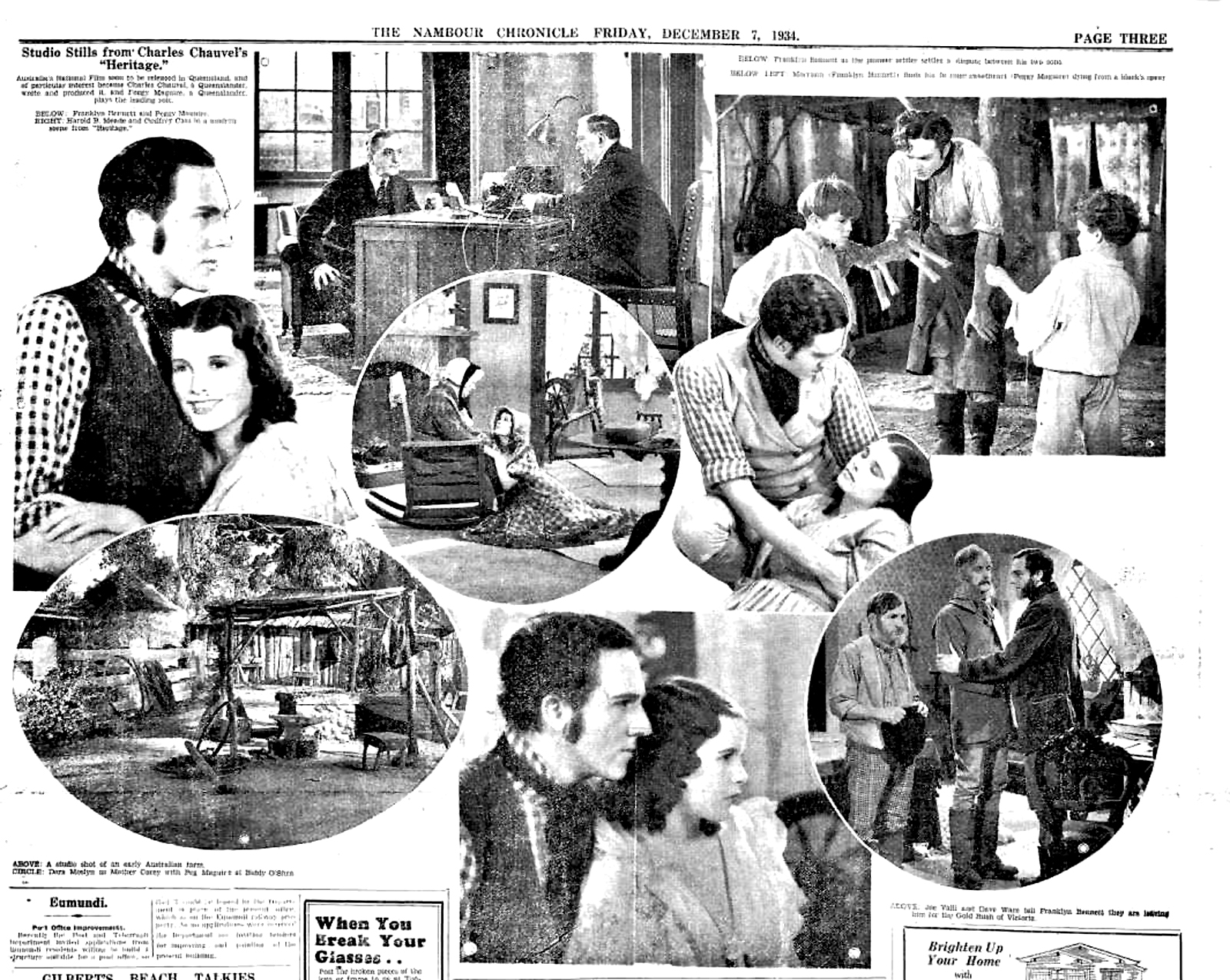
Great Mackerel began as a holiday resort for many and this, tragically, meant the loss of life of this family's very young son:
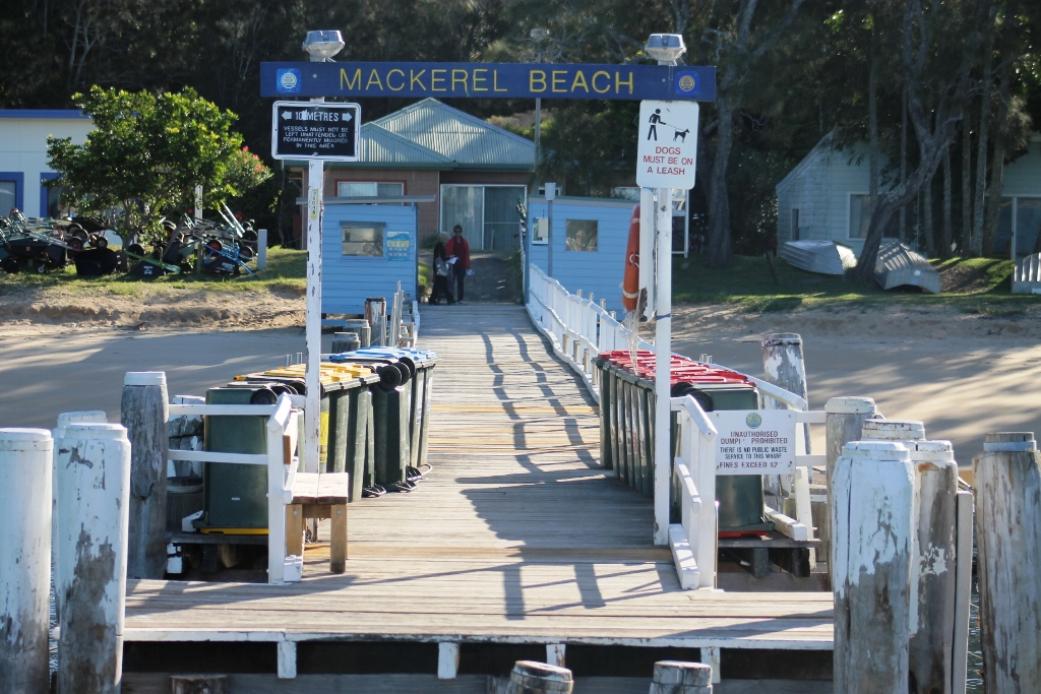
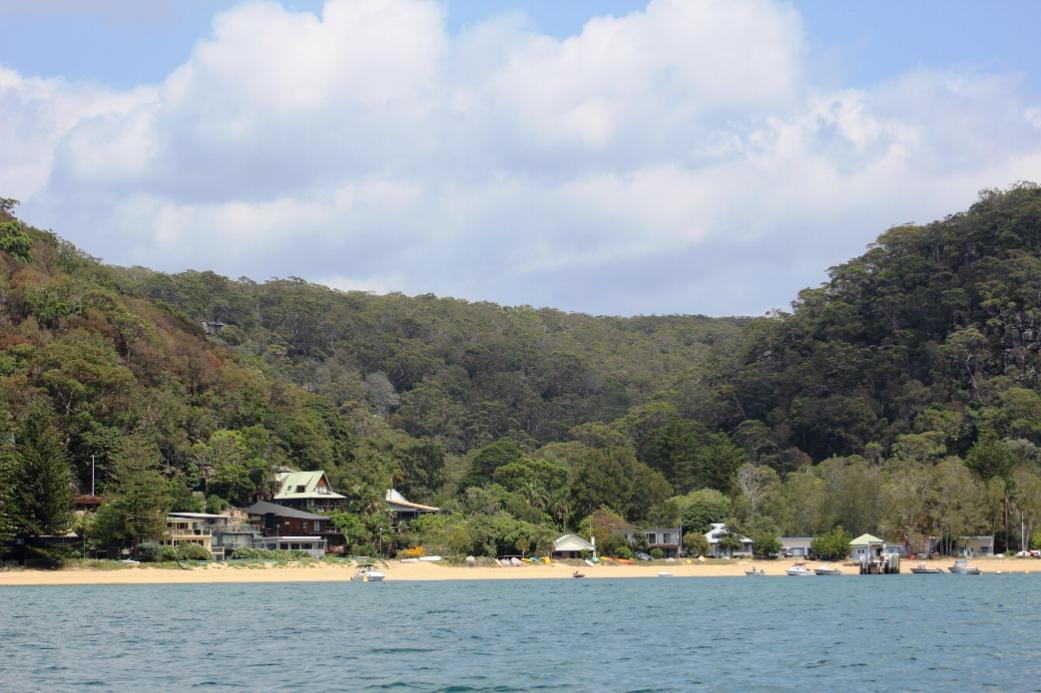
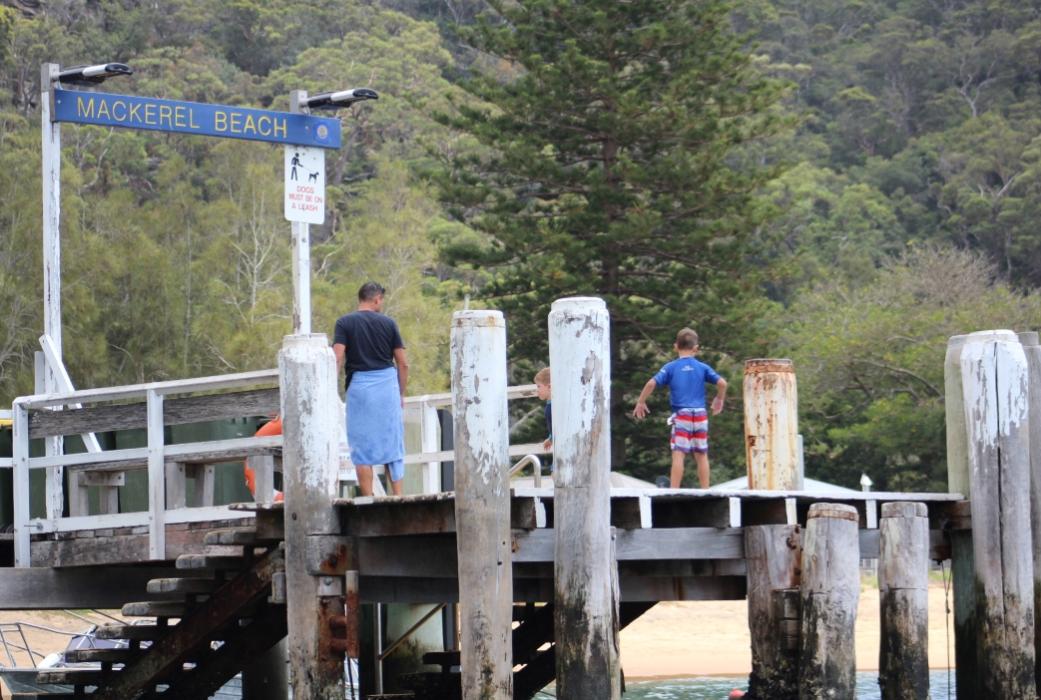
A Few Early Land Owners And Residents
James Marks Snr.
Death of an old Resident at Jamberoo— We have this week to record the death of one more of those settlers whose residence in our district embraces by far the greater part of the time since the axe of the white man first commenced the clearing of its natural forests, Mr James Marks, sen., expired on Saturday last, at the residence of his youngest son, Culwalla Jamberoo. It had been a matter of familiar knowledge throughout the district for a considerable time (some months), that Mr Marks, was in a failing state of. health, nor had he, we believe, any other serious complaint than the mere decay of nature, which, though he had usually enjoyed the most vigorous health, could yet excite no surprise in the case of a person whose age was several years over the threescore and ten.
Mr Marks was about 71 years, was born (we believe) at the town of Ballryronan, country Derry Ireland. In 1826 he arrived in this colony in company with Mr W Charles, and bringing his wife (who died some years since), and his second son John, then a year or two old, and settled in Sydney, where for several years he carried on business with energy and success.
About thirty years since he settled in Illawarra having purchased the Terragong Estate, a transaction which no doubt laid the foundation for that favourable position which his family still occupy in the district. The remains of the deceased were interred on Monday last in the burial ground attached to the Presbyterian church, Jamberoo, the hearse being followed from Culwalla by several carriages and a cavalcade of about a hundred and sixty horsemen, a number which would certainly have been which increased, had not the circulation of the tidings of Mr Minks death been restricted by the circumstance that the only intervening day was a Sunday. The Rev. Mr Kinross delivered a brief but impressive address over the grave, and a large number of those in attendance remained on the spot to the last. Of the position of those members of Mr Marks family who survive him — five sons and one daughter — it would be quite superfluous for us to speak. Extraordinary Maintenance Case. (1870, December 2). Illawarra Mercury (Wollongong, NSW : 1856 - 1950), p. 3. Retrieved from http://nla.gov.au/nla.news-article135804924
On the 26th November, at Culwulla, Jamberoo, Mr. JAMES MARKS, age 74 years. Family Notices (1870, December 6). The Sydney Morning Herald (NSW : 1842 - 1954), p. 1. Retrieved from http://nla.gov.au/nla.news-article13221545
Culwulla, Jamberoo, was owned by James Marks. His mother, Elizabeth passed away a few weeks before a garndchild was born:
MARKS—November 8th, at her residence, Culwulla, Jamberoo, Mrs. James Marks, jun., of a son.
MARKS—October 18th, at Kiama, Elizabeth, the wife of James Marks, sen., Esq., aged 63 years. Family Notices (1863, November 21). The Sydney Morning Herald (NSW : 1842 - 1954), p. 7. Retrieved from http://nla.gov.au/nla.news-article13086571
Children of James and Elizabeth Marks born in NSW:
MARKS SAMUEL 2778/1832 V18322778 45A JAMES ELIZABETH
MARKS ROBERT 128/1830 V1830128 45A JAMES ELIZABETH
MARKS MARGARET 129/1830 V1830129 45A JAMES ELIZABETH
MARKS JAMES 2893/1834 V18342893 45B JAMES ELIZABETH
MARKS JAMES 55/1835 V183555 47 JAMES ELIZABETH
MARKS ANNE E 4186/1839 V18394186 45B JAMES ELIZABETH
MARKS ELIZABETH 4287/1841 V18414287 45B JAMES ELIZABETH
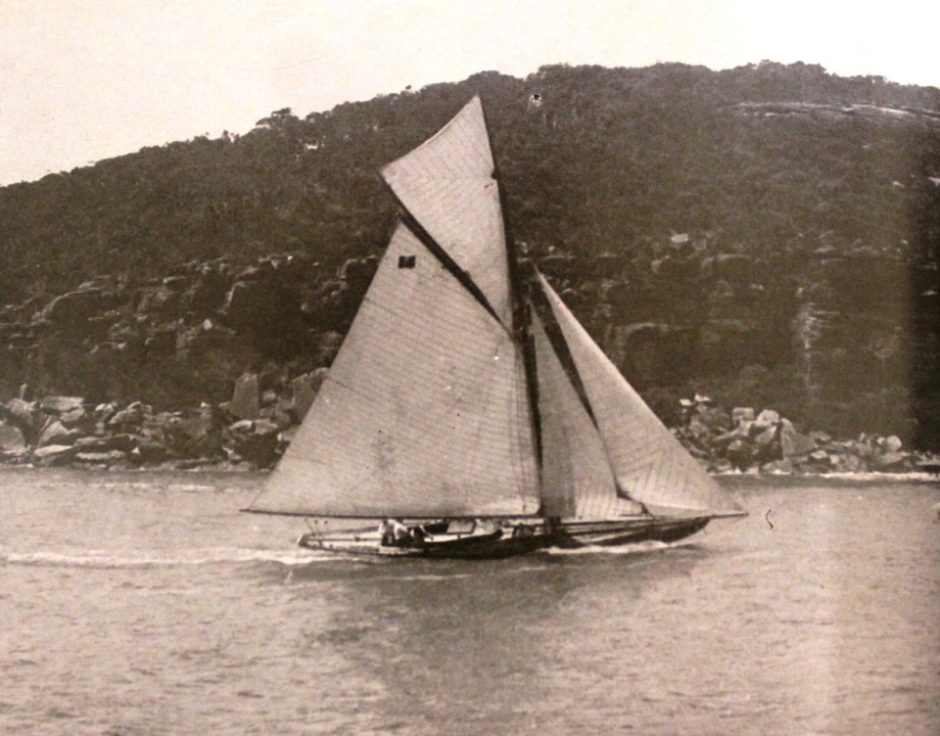
The King-Connell Family
The late Mr A. King —The mornful duty again desolves upon us this week of recording the death of another one of our oldest and most successful residents. On Sunday afternoon last the mortal remains of Alexander King, Esq. J.P, were interred in the Anglican Church graveyard, Kiama, being followed thereto by a large number of the most respectable and wealthy residents from all parts of the district. The deceased gentleman took up his abode in this neighborhood, with his still surviving brothers, at a very early period of its settlement ; and by the force of industrious and thrifty habits, had succeeded in obtaining a very comfortable temporal position. His intelligence and sagacity recommended him to the Government for the honor of J.P., which was conferred upon him five or six years ago, and the duties of this office were performed by him honorably and creditably. Mr King leaves behind him a widow and a large family, by whom, as well as a large circle of relatives and friends, his death will be deeply deplored. — ' Independent.' No title (1867, March 22). Illawarra Mercury (Wollongong, NSW : 1856 - 1950), p. 2. Retrieved from http://nla.gov.au/nla.news-article135814999
The death occurred at Kiama last week of Mrs Margaret King (relict of the late Mr Alexander King and only surviving daughter of the late Mr James Moody Marks). The deceased lady, who was 72 years of age, had, for a considerable time past, been suffering from diabetes, which was the cause of her death. The remains were interred at Kendall Cemetery. The late Mrs King was Mrs G W Fuller's mother. The Searchlight. (1905, July 14). Illawarra Mercury (Wollongong, NSW : 1856 - 1950), p. 4. Retrieved from http://nla.gov.au/nla.news-article132238047
William Moore Connell was the youngest son of Henry Connell:
Obituary
Mr. HENRY CONNELL.
In our obituary last week we announced the death of Mr. Henry Connell. This week we are enabled to give a few fuller particulars of the life of the deceased. Mr. Henry Connell arrived in the colony in the year 1824. He brought letters of recommendation from the Earl of Bathurst, Secretary of State to the Colonies, and subsequently received a grant of land of 640 acres. Shortly after his arrival he acted, for about three months, as assistant private secretary to Sir Thomas Brisbane. He was then appointed to the Commissariat Department, under Deputy Commissary General Laidley. He received his appointment as a Treasury clerk from the Lords Commissioners of Her Majesty's Treasury, in the year 1839; and in 1844 he received his commission as a Deputy Assistant Commissary-General.
In 1848 he was ordered to proceed to the formation of a new colony by the home authorities at Port Curtis, Northern Australia, under the newly-appointed Governor, Colonel Blamey. After a large expenditure of Imperial money the project of establishing a new colony was cancelled about nine months from the arrival of the first vessel with troops. In 1849 Mr. Connell was ordered to proceed to Western Australia, where he did duty at several stations in that colony Perth, and Albany, King George's Sound. He was a magistrate of that colony. In 1856 he received his commission, and promotion to the rank of Assistant Commissary-General, and was ordered to proceed to the Crimean war. He and his son William took their departure in the steamship Royal Charter, and upon their arrival in London, found that the Russian war was over. Mr. Connell was then placed with a large number of other officers on the half-pay list, but was allowed to return to Australia to await further orders. Having arrived in Sydney, he shortly afterwards received instructions to proceed to New Zealand, where the rebellion with the natives was going on. Mr. Connell was attached to the 60th Regiment of Foot at Taranaki, and subsequently received the New Zealand war medal. In 1861, after a long and meritorious service, he was allowed to retire on full pay, which he enjoyed for nearly 20 years. He gave his leisure services to the performance of magisterial duties at the metropolitan police courts.
Mr. Connell was the second son of the late Anthony Connell, barrister-at-law, Recorder of Kinsale, and Commissioner of Bankrupts, Cork, Ireland. He expired at his residence, William-street, on the 22nd ultimo. Obituary. (1880, July 10). Australian Town and Country Journal (Sydney, NSW : 1870 - 1907), p. 13. Retrieved from http://nla.gov.au/nla.news-article70945683
Elizabeth passes away:
CONNELL. -June 17, 1942, at her residence, Merribah, Ocean Avenue, Double Bay, Elizabeth, widow of the late William Moore Connell, of Avoca Station, Gulargambone, and mother of Harold Moore, Henry Norman (deceased), Leslie Gordon, and Mrs. Vera E. Ruskin Rowe. Family Notices (1942, June 19). The Sydney Morning Herald (NSW : 1842 - 1954), p. 10. Retrieved fromhttp://nla.gov.au/nla.news-article17799139
Ernest Blackwell
Marriage: BLACKWELL—BLACKWELL.—On December 24, at the residence of the bride's parents, by the Rev. Joseph Parker, Ernest Blackwell, oldest son of Samuel Blackwell, Esq., of Stockport, England, to Gertrude Hodges Blackwell, eldest daughter of J. W Blackwell, of this city. Family Notices (1889, December 28). The Sydney Morning Herald (NSW : 1842 - 1954), p. 1. Retrieved from http://nla.gov.au/nla.news-article13754611
Died:
BLACKWELL October 11 Ernest, beloved husband of Gertrude Hodges Blackwell and eldest son of the late Mr and Mrs Samuel Nicholson Blackwell, Stockpool, England. Privately cremated October 12. Family Notices (1929, October 14). The Sydney Morning Herald (NSW : 1842 - 1954), p. 10. Retrieved from http://nla.gov.au/nla.news-article16592766
OBITUARY.
MR. ERNEST BLACKWELL.
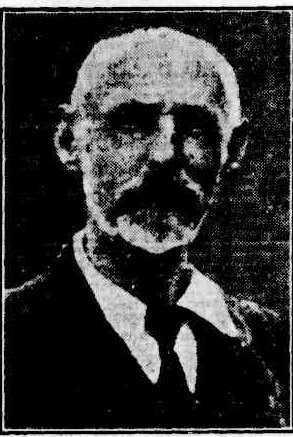 The death of Mr. Ernest Blackwell took place suddenly on Friday afternoon at his home, St. Michael's Flats, Hunter-street. Mr. Blackwell suffered a stroke on Wednesday night, and died without regaining consciousness. He had a very large circle of friends in literary, artistic, and political circles.
The death of Mr. Ernest Blackwell took place suddenly on Friday afternoon at his home, St. Michael's Flats, Hunter-street. Mr. Blackwell suffered a stroke on Wednesday night, and died without regaining consciousness. He had a very large circle of friends in literary, artistic, and political circles.
Mr. Blackwell, who was a member of a well-known family in the English Midlands, came to Australia as a young man about 1884, and was soon afterwards engaged on the staff of the "Sydney Daily Telegraph," where he had a brilliant career. He represented the paper in the Soudan war, accompanying the Australian contingent, and afterwards worked on the staff for some years, finally forsaking journalism, of which profession he had been a notable ornament, for the practice of dentistry.
He was in practice in Macquarie-street at the time of his death. He will, however, be chiefly remembered for his services in the newspaper world, and Press-men all over Australasia will regret to hear of his passing. Mr. Blackwell had recently been appointed to the Film Censorship Board, on which he did valuable work.
Mr. Blackwell had an extraordinary range of friends and acquaintances, and was very well known in the political world. His was a nature of remarkable urbanity and kindness, and his toleration of the hard luck story was profound, while his endeavours to mitigate misfortune were never-ceasing.
He is survived by Mrs. Blackwell and six children-three sons and three daughters. Two of his sons are on the land, and the other, Dr. Clive Blackwell, is a dentist. One of the daughters is Mrs. Arthur Cooper. The remains were privately cremated, in accordance with Mr. Blackwell's wish, on Saturday afternoon. OBITUARY. MR. ERNEST BLACKWELL. (1929, October 14). The Sydney Morning Herald (NSW : 1842 - 1954), p. 15. Retrieved from http://nla.gov.au/nla.news-article16592707
ERNEST BLACKWELL
AN APPRECIATION.
(BY A.J.H.)
The community is poorer by the death of this cultured gentleman. It was the writer's privilege to enjoy his friendship for close on 40 years, and his sudden end came to an unnumbered host of friends as a great shock. How much better as a place to live in this world would be were there more of his kind, only those who knew Ernest Blackwell can Imagine. Did anyone ever see him with a wry or glum face? Surely not. His perennial smile and bonhomie were inexhaustible. His cheery optimism poured out the very wine of life. His note was one of gladness and gratitude for life itself, and no one met him but felt an uplift and shared the radiance of his rare personality. The writer has often met him when his mood might easily have been one of anxiety and worry, but his sparkling eyes and his natural bearing simply would not be denied. His thought was for others, not himself. But a week ago we met when he was in one of his most charming moods, and when he was looking forward to some new venture with rare and Intelligent optimism. One was so struck with his infectious smile and cheerful outlook that one was tempted to remark, "Ernest, when you die it will be with a smile on your lips." "I hope so, old man," was his happy reply; and if his last breath was not drawn to the music of laughter it is safe to say that his last conscious moments were in keeping with his whole life. Shakespeare might have had such a one as Ernest Blackwell for his inspiration when he made Mark Antony say of Brutus:
His life was gentle, and the elements
So mixed in him that Nature might stand up
And say to all the world, "This was a man!"
Long days will pass ere the fragrance of his memory is lost. ERNEST BLACKWELL. (1929, October 15). The Sydney Morning Herald (NSW : 1842 - 1954), p. 10. Retrieved from http://nla.gov.au/nla.news-article16593100
Ernest Blackwell
Last week end saw the death in Sydney of Ernest Blackwell. journalist and dentist. Formerly a brilliant reporter and paragraphist on the old Sydney Daily Telegraph, he later edited the Centennial Magazine. Giving up journalism he took up dentistry, and it was in his chambers that Mr Briscombe formerly of Manilla gained his professional knowledge. Right up to death he retained his membership of the Institute of Journalists. Ernest Blackwell (1929, October 18). Manilla Express (NSW : 1899 - 1954), p. 2. Retrieved from http://nla.gov.au/nla.news-article193620050
ERNEST BLACKWELL.
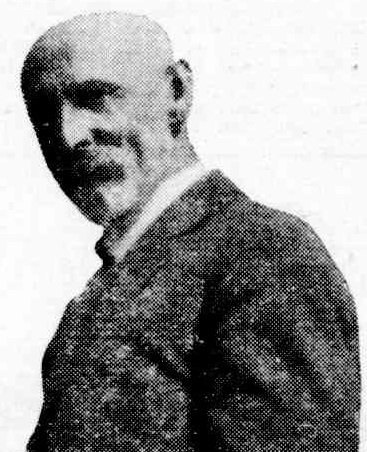
Mr. Ernest Blackwell, who died suddenly in Sydney recently, was a man of many parts. Coming to Australia from the English Midlands in 1884, he joined the literary staff of the Sydney "Daily Telegraph," and later was chosen to accompany, as that journal's representative, the Australian contingent that was sent to participate in the Soudan War.
In the early nineties he took William Lane's place as editor of the Queensland 'Worker' until, 18 months later, William Guy Higgs, afterwards Labor M.P. for Capricornia, was appointed to the position. Mr. Blackwell was an academic and visionary exponent, of Labor principles, never having come into close touch with the Movement on its practical side. He cherished, however, its highest ideal. As a descriptive writer he held a very high place, and his article on the historic Brisbane Flood in 1893 is vividly remembered even unto this day by local oldtimers. Mr. Blackwell was a very lovable man, and the news of his death was received with deep sorrow by many Laborites who learned to know him in those far-off Brisbane days. ERNEST BLACKWELL. (1929, November 13). The Australian Worker (Sydney, NSW : 1913 - 1950), p. 14. Retrieved from http://nla.gov.au/nla.news-article145967087
LATE MR. E. BLACKWELL.
Probate has been granted of the will of the late Mr. Ernest Blackwell, of Turramurra, dentist, who died on October 11 last, aged 66 years, leaving an estate of the net value of £9512, the whole of which he left in trust for his widow and children, the former to receive the income during her life. LATE MR. E. BLACKWELL. (1930, January 10). The Sydney Morning Herald (NSW : 1842 - 1954), p. 17. Retrieved from http://nla.gov.au/nla.news-article16616777
BLACKWELL-WILLIS.
The wedding of Miss May Gordon Willis, only daughter of the late F. S. Willis, and Mrs. Willis, of Springdale-road, Killara, to Dr. Clive Blackwell, third son of Mr. and Mrs. Ernest Blackwell, of Turramurra, was celebrated last night at St. Stephen's Church, Phillip-street, by the Rev. C. E. James. The bride's frock of white georgette was appliqued with ivory chiffon velvet, embroidered in gold. She wore a train of white georgette, trimmed in the same way, and her cut tulle veil was confined to her head with a narrow wreath of orange blossoms. She carried a bouquet of gold and white orchids. There were three bridesmaids, the Misses Gwen Arthur, Lille Thomson, and Viva Blackwell, who wore Alice blue georgette, with gold lace. Their bandeaux were of blue and gold, and they wore armlets of autumn-tinted gloriosa. Dr. Wilson Evans was the best man, and the groomsmen were Messrs. Ramsay Pennecuik and Edwin Penfold. Dr. Sinclair Gillies gave the bride away. After the ceremony, a reception was hold at the Queen's Club, the bride's mother receiving the guests in a gown of grey georgette beaded and trimmed with fur. She added a black velvet hat. BLACKWELL—WILLIS. (1926, April 22). The Sydney Morning Herald (NSW : 1842 - 1954), p. 4. Retrieved from http://nla.gov.au/nla.news-article16287417
Earlam-Blackwell Wedding
Miss Covey (Eleanor) Blackwell, youngest daughter of the late Ernest Blackwell and Mrs. Blackwell, of Studley Royal, Kirribilli, wore a graceful gown of parchment satin with a long veil of parchment tulle, encircled with orange blossoms, for her wedding on Saturday afternoon to Mr. Stewart Earlam, younger son of Mr. Harold Earlam (superintendent of the N.S.W. Institution for the Deaf, Dumb, and Blind, Darlington) and Mrs. Earlam. Her bouquet of deep cream roses and frangipanni completed her parchment toned ensemble.
The ceremony was performed at Christ Church, Lavender Bay, by the Rev. J. Bidwell, and the bride was given away by her brother, Mr. Stanley Blackwell. Miss Helen Scott came from Canberra to act as bridesmaid, and wore a floral chiffon frock in shades of blue and white. Her large hat was of matching blue straw, and she carried pink roses and blue delphiniums. Dr. Malcolm Earlam, brother of the bridegroom, was best man.
Mrs. Blackwell, wearing a gown of black and white georgette and a black hat, received about 80 guests at a party held at her residence after the ceremony. PARCHMENT TONES. (1933, December 26). The Sydney Morning Herald (NSW : 1842 - 1954), p. 3. Retrieved from http://nla.gov.au/nla.news-article17035521
THE LATE REV. STANLEY BLACKWELL.
The funeral of the late Rev. Stanley Blackwell took place at Rookwood Cemetery on Saturday morning, the last simple rites of the Congregational Church being performed by the Rev. Walter Mathison, B.A., of Croydon, and the Rev. N. J. Cocks, M.A., of North Sydney. Amongst the relatives and friends present were Mr. Ernest Blackwell (only surviving brother), Mr. William Blackwell and Mr. Frank Blackwell (cousins), Messrs. Robert Hay, T. D. Hay, W. R. Beaver, William Laing, Herbert Robinson, Norman Robinson, W. D. Laing, W. R. Virgoe, G. F Birks, H. S. Giles, and R. Bernard Job.
The deceased clergyman, who was for seven years a student at the Lancashire Independent College and the Manchester University, and an associate of the Theological Society, came to Sydney in search of health nearly 12 months ago, and during the greater portion of the time resided with his brother at Ashfield. In the early part of last winter, acting upon the advice of Dr. Blackwood, of Summer Hill, he underwent a somewhat serious operation, speedily recovered at least his former measure of health, and in the hope of still further recruiting, went for a while to Brisbane, where he was the guest of one of the leading medical men of that State. Before his departure for Queensland and since his return he had preached in several Presbyterian and Congregational churches in the neighbour-hood of Sydney, and within the past fortnight his services had been bespoken for several pulpits about to be rendered temporarily vacant by the absence of ministers on holiday. THE LATE REV. STANLEY BLACKWELL. (1902, December 29). The Sydney Morning Herald (NSW : 1842 - 1954), p. 8. Retrieved from http://nla.gov.au/nla.news-article14480770
Ernest wife’s death: BLACKWELL GERTRUDE HODGES 29257/1955 JAMES MATILDA NORTH SYDNEY
The 'syndicate' members (??) - and again council is seizing land in the middle of WWII when many of those listed may have been serving elsewhere and unlikely to see this 'Notice':
OVERDUE RATES.—Shire of Warringah.—Land to be Sold for Default.—The following persons are required to take notice that the Council of the Shire of Warringah has applied to the Public Trustee to sell the land specified below against their names, of which they appear to be the owners or in which they appear to be interested, for overdue rates amounting to the sums mentioned in each case, and that in default of payment forthwith to the Public Trustee of the said rates and all interest charges and expenses in connection with the said applications and proceedings by the Public Trustee the said land "will be offered for sale by the Public Trustee at Public Auction:—
Gertrude Hodges Blackwell, Frank Wiseman Doak, and Percy Underwood Alley, all of Sydney, Florence Rose, of Haberfield, and Victor Rose, of Beecroft and Glebe Point; overdue rates, £47 Is. 8d.; land, lots 85/87, d.p. 10,000, Ross Smith parade, Broken Bay.
Howard Castle-Smith, of Woolwich and Sydney; overdue rates, £80 8s. 10d.; land, lot 1, being part of portion 15, Coasters Retreat, Broken Bay.
Adeleine Frances Miller, of Mosman, and Auckland, New Zealand; overdue rates, £39 0s. 8d.; land, lot 18, d.p. 11,107, Harley-road, near Careel Ocean Beach.
Gerald Wilkinson Mitchell, of Lindfield, Charles Harold Lane, of Turramurra, executors of the will of Gerald Wilkinson Mitchell and H. G. Congden, of Forest Lodge; overdue rates, £29 9s. Id.; land, lot 10, d.p. 16,749, Barrenjoey-road, Palm Beach.
Hedwig Rainaud, of Bayview, Catherine Sussanah Lloyd, of Bayview, and the estate of Michael O'Callaglian; overdue rates, £29 2s. 4d.; land, lot 12, d.p. 11,518, Corniche-road, Bayview.
Dorcas Scott and David Scott, both of Newport, Herbert Scott, of North Sydney, George Watkins Phillips, of Sydney, and Minnie Scott, of Collaroy; overdue rates, £427 Is. Id.; land, part portion 37, Prince-street, Newport.
Arthur Jabez Small, of Sydney, Avalon Beach Estates Limited and Louise Augusta Alrich, of Mosman; overdue rates, £116 18s. 4d.; land, lot 115, d.p. 16,393, The Serpentine, Avalon Beach.
Anna Thomson Stillman, of Mosman; overdue rates, £26 7s. 4d.; land, lot 4, section 10, George-street, Careel Bay.
W. B. GEDDES, Public Trustee, 19 O'Connell-street. 1574—£5 5s. OVERDUE RATES.—SHIRE OF WARRINGAH.—Land to be Sold (1943, June 25). Government Gazette of the State of New South Wales (Sydney, NSW : 1901 - 2001), p. 1098. Retrieved from http://nla.gov.au/nla.news-article222037688
Percy Underwood Alley – estate agent of Cronulla in 1935
ALLEGED BREACH OF PROMISE.
GASKING V. ALLEY.
In this action Florence Amelia Gasking sued Percy Underwood Alley (formerly in business in Taree), claiming £5000 damages for alleged breach of promise of marriage. The case, as out lined by counsel, was that the plaintiff, a single woman 27 years of age entered the employment of the defendant, a widower, 49 years of age, who carried on a real estate business at Cronulla, some four years ago, being engaged as secretary. At the end of her second year the defendant entered into partnership with a Mr. Dobson, and at this time the defendant became very friendly with her, visiting her in her mother's home. In October, 1920, the partnership with Dobson was cancelled owing to a disagreement which culminated in a police court case. Defendant eventually visited the plaintiff in her home before Christmas in 1927, told her that he did not before realise how much she meant to him, and begged her to return to the office. He told her that, he contemplated taking legal proceedings against Dobson, and suggested that she would be able to give valuable evidence in his favor. Having had an assurance of the sincerity of defendant's feelings towards her, she returned to his office, and on the day following received from him a present of a black opal locket. When on a visit with her, family to Ettalong Beach defendant spent the week-ends with her, and on her return to Cronulla in February he formally proposed marriage and presented her with an engagement ring, suggesting that they should be married in six months, by which time his lawsuit with Dobson would have been disposed of. At the end of that time, however, the case was still pending, and defendant proposed another postponement because as he explained, a wife's evidence in her husband's cause in any litigation would be discounted. Shortly before Christmas plaintiff complained of defendant corresponding with other girls, and returned his ring and locket. The defendant, however, persuaded her to resume the engagement, and definitely promised marriage, during Christmas of that year. As the appointed time approached he suggested another postponement, on the ground of the rush of business. After a visit to Canberra, plaintiff on returning found the defendant's attitude towards her completely changed. When asked if he intended to carry out his promise ; defendant said that he did not intend to marry the plaintiff because she had failed to keep her promise to give evidence against Dobson. Counsel suggested that if the defendant ever had any affection for the plaintiff it was subordinated to his inordinate enmity for Dobson, and that he intended merely to use her to accomplish his revenge. The defendant admitted the promise, and said he was always ready and willing, that he sought a postponement on the ground of ill-health, and that the engagement was terminated by the plaintiff. The jury returned a verdict for defendant. ALLEGED BREACH OF PROMISE. (1929, September 21). The Northern Champion (Taree, NSW : 1913 - 1954), p. 5. Retrieved from http://nla.gov.au/nla.news-article158376383
Frank Wiseman Doak – married Mabel Annie Bucknall (born on 1 Sep 1866 in Rodborough). She died on 15 Nov. 1947. She was buried in Northern Suburbs Crematorium, Sydney.
Mabel married Frank Wiseman Doak son of Andrew James Doak and Lucie Ellen Wiseman on 31 Dec 1894 in Rodborough Vale. Frank was born on 5 Jul 1870. He died on 22 Apr 1943. He was buried in Northern Suburbs Crematorium, Sydney.
They had the following children: Mabel Stella Doak, Anthony Frank Wiseman Doak, James Stephen Bucknall Doak, Joan Monica Doak was born on 25 May 1903, Janet Kathleen Doak
Dr. Doak's parents were:
DOAK—WISEMAN—April 18th, at St. Andrew's temporary Cathedral, by the rev. T. O'reilly, Andrew James Doak, to Lucy Ellen, second daughter of Captain Wiseman. Family Notices (1868, May 2). Sydney Mail (NSW : 1860 - 1871), p. 2. Retrieved from http://nla.gov.au/nla.news-article166796494
Lucy’s death: DOAK LUCY E 6201/1898 parents CHARLES ANNIE at MOSMAN
DEATH OF CAPTAIN WISEMAN.
WE regret to have to record the death of Captain CHARLES WISEMAN, a name as familiar as a household word to the majority of the old residents of the Clarence. A native of Essex, and connected by birth with an old shipping family, he came originally in 1839 as chief officer on board the Argyle, bound from London to Sydney and Calcutta. After his voyage to Calcutta, he returned to Sydney by the Lady M'Naughten. His first engagement in the colony was that of chief officer on board tho Maitland, of which, after a few months, he become captain ; he was after-wards transferred to the Tamar, and thence to the Sophia Jane, in which he made his first voyage to the Clarence in 1842. Regular steam communication with the Clarence was opened by the William the Fourth, of which vessel Mr. WISEMAN continued master and part owner till the latter end of 1846. The William the Fourth was superseded by the Phoenix, a new boat, built for Mr. E. MANNING ¡ this vessel was stranded at the Heads in 1850, and finally lost on the bar. The loss of this boat was the occasion of bringing out a strong feeling on the part of the district, which at that period had but few who were able to materially assist in the enterprise, in favour of another attempt to open up the Clarence trade. Captain WISEMAN was sent to England to superintend the building of the steamer Clarence, and to bring her out to the colony. Upon her arrival, she was sold for a large profit, over and above her cost, to a Launceston Steam Company, and Captain WISEMAN was sent to England to superintend the construction and to bring out the steamer Grafton, a boat which has done good service to the district, and proved a good speculation to the Clarence and Richmond Rivers Steam Navigation Company. The Grafton appears to have been put on the berth for the Clarence in 1854. The increase of the trade induced the Company to send home the CAPTAIN to superintend and bring out the Urara, which proved a good serviceable boat, but unfortunately was lost at the Heads; previously to this, Captain WISEMAN had left the service of the Company, having retired from the sea. On the formation of the Clarence and New England Steam Navigation Company, CAPTAIN WISEMAN was appointed the Sydney Manager, which office he ably filled up to about two years since, when he was compelled to resign in consequence of ill-health. The Directors, upon his retirement, presented him with an illuminated address from the shareholders of the Company. Captain WIISEMAN was universally respected by the settlers on the Clarence, and his death removes another connecting link between the old and the new times of the Clarence. His death was caused by an asthmatic disease, to which he has long been subject, and which had gradually reduced his constitution. He died at his late residence, Prince-street, Sydney, at three o'clock on Friday last, being, we believe, in his sixty-third year. DEATH OF CAPTAIN WISEMAN. (1873, September 30). Clarence and Richmond Examiner and New England Advertiser (Grafton, NSW : 1859 - 1889), p. 2. Retrieved from http://nla.gov.au/nla.news-article61897530
On the 26th September, at his late residence, 17, Prince street, Captain Charles Wiseman, aged 62 years. Family Notices (1873, October 4). Australian Town and Country Journal (Sydney, NSW : 1870 - 1907), p. 28. Retrieved from http://nla.gov.au/nla.news-article70481366
RETIRES FROM SERVICE, MELBOURNE, Saturday.
The Governor-General has approved of the retirement of Andrew James Doak, Chief Accountant and Controller Money Order Office, Sydney, from the 1st of November, 1903. RETIRES FROM SERVICE. (1904, January 31). The Sunday Sun (Sydney, NSW : 1903 - 1910), p. 2. Retrieved from http://nla.gov.au/nla.news-article230028825
A GRAZIER'S WILL - ESTATE VALUED AT £33,000.
The late Mr Solomon Wiseman, grazier, of Cliffdale, near Wingen, who died on December 22, 1901, under his will dated July 26,1900, appointed Laban Edwin Wiseman, of Grundy, near Scone, Gerrard Edwin Herring, of Sydney, and Thomas Dowe, of Tamworth, as trustees and executors of his estate, the value of which for the purposes of probate was sworn under £33,327. The real estate consists of 2317¾ acres of land at Cliffdale, 6939¼ acres of free-hold and C.P. land and 1695 acres of C.L. land at Woollara, in the Cassilis and Mudgee land districts, and also some freehold land at Hunter's Hill. The will instructed the trustees to sell the testator's real estate within a year of his death, and convert it into money, and after liquidating all debts and expenses to pay out of the proceeds £8000 to Albert Sydney Lavis, better known as Albert Sydney Wiseman, £7000 to Louisa Ellen Lavis, better known as Louisa Ellen Wiseman; £2000 to Lucy Jane Thomas, wife of Richard Will Thomas, Church of England clergyman; £2000 to Violet Nellie Alma Wiseman, daughter of Henry Rowland Lavis, better known as H. R. Wiseman; £2000 to Esther Caroline Levi Montefiori, daughter of Sophia Mary Montefiori, of Brisbane; £2000 to May Day, of Newcastle; and £2000 to Thomas Wiseman, son of Laban Edwin Wiseman. The balance of the estate after payment of these legacies is to be divided equally amongst the following persons:—Albert Sydney Lavis, Louisa Ellen Lavis, Mrs. L. J. Thomas, and Esther Caroline Levi Montefiori. By a codicil to the will testator directed that the sum of £8000, which had been bequeathed by him to Albert Sydney Lavis (who meantime had died) should be divided equally be- tween Mrs. Thomas and Esther Caroline Levi Huband-Smith (formerly Montefiori), and the balance of his estate to be divided in equal shares between Ellen Carter (formally Lavis), Mrs. Thomas and Mrs. Huband-Smith. A GRAZIER'S WILL. (1902, July 29). The Sydney Morning Herald (NSW : 1842 - 1954), p. 9. Retrieved from http://nla.gov.au/nla.news-article14439697
Frank Wiseman Doak
Born: 5 July 1870
Died: 27 April 1943
B.A., L.R.C.P. and S. (Edin.), L.F.P.S. (Glas.), F.R.A.C.S. : Captain, R.A.M.C., England, Scotland, Malta and Transport Service.
Enlisting in London in May, 1915, served at Aldershot, Edinburgh and then for twelve months in Malta, returning to England on hospital ship "Essequibo". Subsequently was S.M.O. troopship "Suffolk" to Durban and thence to Australia late in 1916.
University Scholar.
Early education at Sydney High School. Later at St. Paul''s College, also undergraduate in Medicine.
Source: Book of Remembrance, University of Sydney
Birth record
5 July 1870 in Surry Hills, NSW, Australia
Death record
27 April 1943 in Mosman, NSW, Australia
Addresses
Warrender, Belmont Road, Mosman, NSW, Australia
Warrender, 106 Belmont Road, Mosman, NSW, Australia
Relationships
Father - Andrew James Doak
Mother - Lucy Ellen Wiseman
Wife - Mabel Annie Bucknall
Child - James Stephen Bucknall Doak
Child - Anthony Frank Wiseman Doak
Organisations
Member Of – University of Sydney
Royal Army Medical Corps
Main sources
DOAK, FRANK WISEMAN: Book of Remembrance, University of Sydney (webpage)
PERSONAL VICE--REGAL. [Departure for England] (newspaper article)
PERSONAL. VICE-REGAL. [Serving at Malta] (newspaper article)
DOCTORS' MESSAGE. FROM THE FRONT. HOW TO SAVE LIFE. (newspaper article)
THE MOTOR AUTOMOBILE CLUB'S HONOR BOARD: SOUTH COAST TOUR (newspaper article)
Birth Notice (newspaper article)
Death Notice (newspaper article)
Commemorations
DOAK F. W. on the South Face of the Mosman War Memorial
DOAK, F.W. (Vice Pres.) on the Mosman Rowing Club Roll of Honour 1914-1918
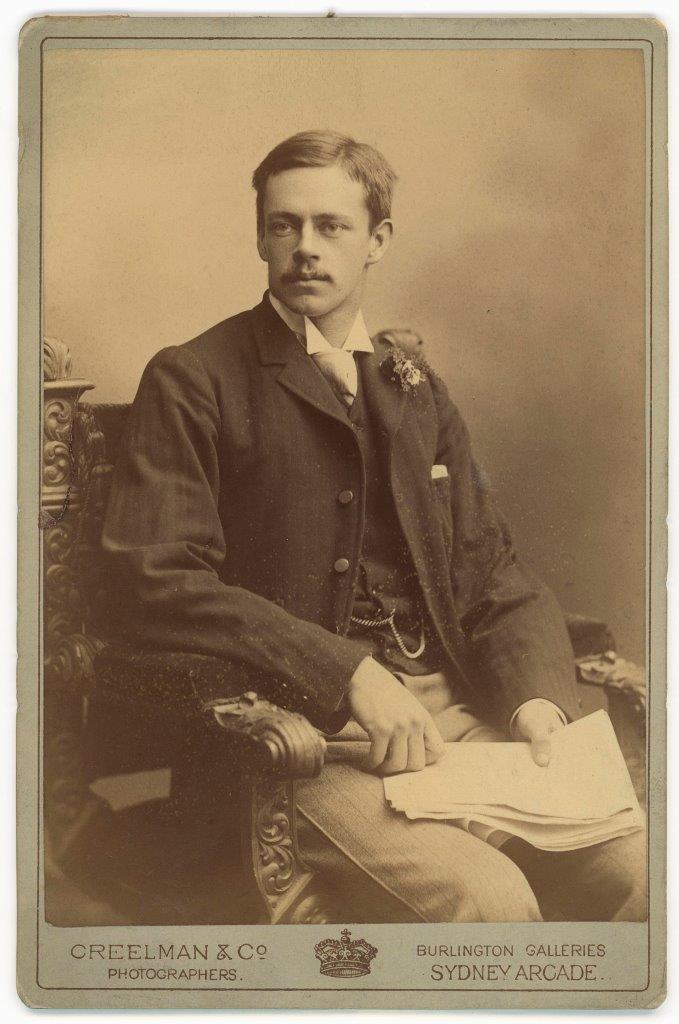
Photograph of Frank Wiseman Doak doctor – courtesy NSW State Records and Archives
MARRIAGES.
DOAK--BUCKNALL. —On the 31st ult., at Rodborough-vale, by the Rev. Charles Harris, Frank Wiseman, elder son of Andrew J. Doak, Sydney, to Mabel Annie, elder daughter of the late Stephen Bucknall. Family Notices (1895, January 31). The Argus (Melbourne, Vic. : 1848 - 1957), p. 1. Retrieved from http://nla.gov.au/nla.news-article9343716
Births. DOAK.—April 1, at Mosman, the wife of Frank W. Doak, of twin sons. Family Notices (1898, April 20). The Sydney Morning Herald (NSW : 1842 - 1954), p. 1. Retrieved from http://nla.gov.au/nla.news-article14143257
Dr. F. W. Doak, of Mosman, left by the Moeraki on Friday for Wellington. After touring New Zealand, he intends joining the Niagara at Auckland for Vancouver. PERSONAL (1915, March 14). Sunday Times (Sydney, NSW : 1895 - 1930), p. 2. Retrieved from http://nla.gov.au/nla.news-article120794837
Dr F. W. Doak, of Mosman, is now on the staff of the Military Hospital at Malta. PERSONAL. (1915, September 6). The Sydney Morning Herald (NSW : 1842 - 1954), p. 8. Retrieved from http://nla.gov.au/nla.news-article15611740
Divorce Court DOAK v. DOAK. Grace Ada Doak (formerly Fitch) v Anthony Frank Wiseman Doak. Marriage, September, 1931, at Cowra. Issue, respondent's adultery. Decree nisi. Divorce Court (1937, June 7). The Grenfell Record and Lachlan District Advertiser (NSW : 1876 - 1951), p. 2. Retrieved from http://nla.gov.au/nla.news-article111753859
Anthony Frank Wiseman Doak service no. 3655 and his twin brother, James service no.63734, were sons of Dr Frank Wiseman Doak and the former Mabel Bucknall. They grew up in family home Warrender, Mosman. The boys attended The Kings School and became clerks. On 20 April 1917, Anthony enlisted in 6th Australian Light Horse Regiment, AIF, 33rd Reinforcement and embarked from Sydney on SS Canberra on 16 November, 1917. Anthony served in Palestine and returned to Australia on 28 June, 1919. He married and died on 6 October,1955. Contributed to Mapping our Anzacs by Judith Green; I also contributed note about Anthonys twin brother James Stephen Bucknall Doak service no. 63734 who enlisted in 35th Field Artillery on 25 February, 1918.
APPOINTMENTS.
Department of Public Health.
THE Governor-in-Council has approved of the following appointments":—
Dr. Frank Wiseman Doak to be Honorary Surgeon, Coast Hospital, Office of the Director-General of Public Health.
Dr. John Cappie Shand to be Assistant Honorary Surgeon, Coast Hospital, Office of the Director-General of Public Health.
RICHARD ARTHUR. APPOINTMENTS. (1929, June 21). Government Gazette of the State of New South Wales (Sydney, NSW : 1901 - 2001), p. 2537. Retrieved from http://nla.gov.au/nla.news-article223022511
DOAK.--April 27 1943 at 114 Belmont Road Mosman, Doctor Frank Wiseman Doak in his 73rd year. For funeral arrangements see Thursday's Herald. By request no flowers. Family Notices (1943, April 28). The Sydney Morning Herald (NSW : 1842 - 1954), p. 12. Retrieved from http://nla.gov.au/nla.news-article17846202
References And Extras
- TROVE - National Library of Australia
- Shelagh Champion OAM and George Champion OAM, in their Profiles of the Pioneers in Manly, Warringah and Pittwater (1996 - revised 2013)
- Pittwater Fishermen: Great Mackerel, Little Mackerel (Wilson's Beach - Currawong) and The Basin
- L. F. Fitzhardinge, 'Moffitt, William (1802–1874)', Australian Dictionary of Biography, National Centre of Biography, Australian National University, http://adb.anu.edu.au/biography/moffitt-william-2464/text3299, published first in hardcopy 1967
- Historic Insights From The Australian National Maritime Museums 1890 Pitt Water 'Era' Yacht Collection: The Basin Regattas
- Pittwater Fishermen: Great Mackerel, Little Mackerel (Wilson's Beach - Currawong) and The Basin
- Martin Burke - Pittwater Patriarchs
- Historic Insights From The Australian National Maritime Museums 1890 Pitt Water 'Era' Yacht Collection: The Basin Regattas
- Flint And Steel Guesthouse - A Hand Built Home That Kept Growing
- Pittwater's Lone Rangers - 120 Years Of Ku-Ring-Gai Chase And The Men Of Flowers Inspired By Eccleston Du Faur
- Pittwater’s Parallel Estuary: The Cowan ‘Creek’
- The Hon. James Joseph Macken - 'Jim' - Profile
- Easter Cruises in Pittwater from 1893
Also Available:
- Pittwater Roads II: Where the Streets Have Your name - Scotland Island
- Pittwater Roads II: Where the Streets Have Your Name - Newport Beach
- Pittwater Roads II: Where the Streets Have Your Name - Clareville
- Pittwater Roads II: Where the Streets Have Your Name - Avalon Beach
- Pittwater Roads II: Where the Streets Have Your Name - Warriewood
- Pittwater Roads II: Where the Streets Have Your Name - Elanora Heights, Green Hills and Ingleside
- Pittwater Roads II: Where the Streets Have Your Name - Mona Vale
- Pittwater Roads II: Where the Streets Have Your Name - Bungan
- Pittwater Roads II: Where the Streets Have Your Name - Bilgola
- Pittwater Roads II: Where the Streets Have Your Name - Coaster's Retreat and The Basin
- Roads In Pittwater: The Bay View Road
- Roads In Pittwater - The Barrenjoey Road
- Motor Car Tours To And In Pittwater Show Us The Way This Place Once Was
- Roads To Pittwater: The Wakehurst Parkway Along Old Oxford Falls Track
- Roads To Pittwater: The Pittwater Road
- Roads To Pittwater: The Sandspit Punt and Spit Bridge
- Roads To Pittwater: The Mona Vale Road
- My Holiday by Charles de Boos – 1861
PITTWATER-NEWPORT.
With a view of putting the Newport Hall in repair and paying off some of the existing liabilities a fancy dress ball was held on Saturday week in the building. Willing hands made the interier of the hall a perfect fairyland, nothing but native flora of various kinds could be seen and in several parts were erected cosey nooks. Among the fancy dresses were Miss Greig as May Beattie in the " Rose of Riviera," Miss Arter as Pierriot. Miss Violet Bulfin as Grace Bros., Miss Blanch Foster as the Duchess of Gainsborough. The British Embassy Manufacturing Co. had a tasty dress representing Pasteur's Washing Fluid and Household Purifier, but unfortunately it did not arrive in time. Miss Maudie Bulfin, who presides over the destinies of the local post office, looked exceptionally well in a pretty white dress, tastefully trimmed with " Forget-me-nots," with sprays of the same flowers woven through her hair. Mrs. J. Booth wore a becoming costume, and Mrs. Quirk, wife of the ex-parliamentary member for the district, displayed a beautiful dress of white satin. Mr. S. Greig gave a good representation of the " White Eyed Kaffir." Mr. F. Stringer took the character of a clown, and the dress was complete in all details. Mr. J. Oliver chose "Night and Morning," heing half white mid half black. " Uncle Sam's Nephew from Ohio" was a splendid rendering by Mr. H. L. Skinner; and Mr. Daniel's effort was a Cricketer. It would not do to close this list of dresses without mentioning Miss Stringer in palo blue. Prizes were offered for the best dresses, and these were carried off by Miss Greig, Miss Arter and Mr. F. Stringer, in that order. Mr. S. Greig, who was the hon. secretary to the movement, had his arrangements complete in every respect.
For some reason men have been sent from Sydney to repair and make part of the road near Newport village, while some the local men, though used to this work, were passed over. This naturally caused some unpleasantness and a special meeting of the Progress Association was called, when it was decided to write to the Parliamentary member of the district with reference to it. It was pointed out that there were men in the district seeking work, and it should hare been given to them, more especially as they were used to the work of roadmaking. The next meeting of the association promises to be somewhat interesting, as several letters, some as far back as May, have not been acknowledged by the Works Department and the manner in which the Department, has treated the association over the public well and water supply has roused the ire of some of the councillors. The meeting is set down for next Saturday. NEHO. PITTWATER-NEWPORT. (1904, November 5). The Mosman Mail (NSW : 1898 - 1906), p. 4. Retrieved from http://nla.gov.au/nla.news-article247008986
Stafford & Co. (1929). The beautiful Riviera estate / Stafford & Co. Ltd Retrieved from http://nla.gov.au/nla.obj-465408584
%20smaller.jpg?timestamp=1568759146236)
.jpg?timestamp=1568758988750)
.jpg?timestamp=1568759204100)
.jpg?timestamp=1568759255950)
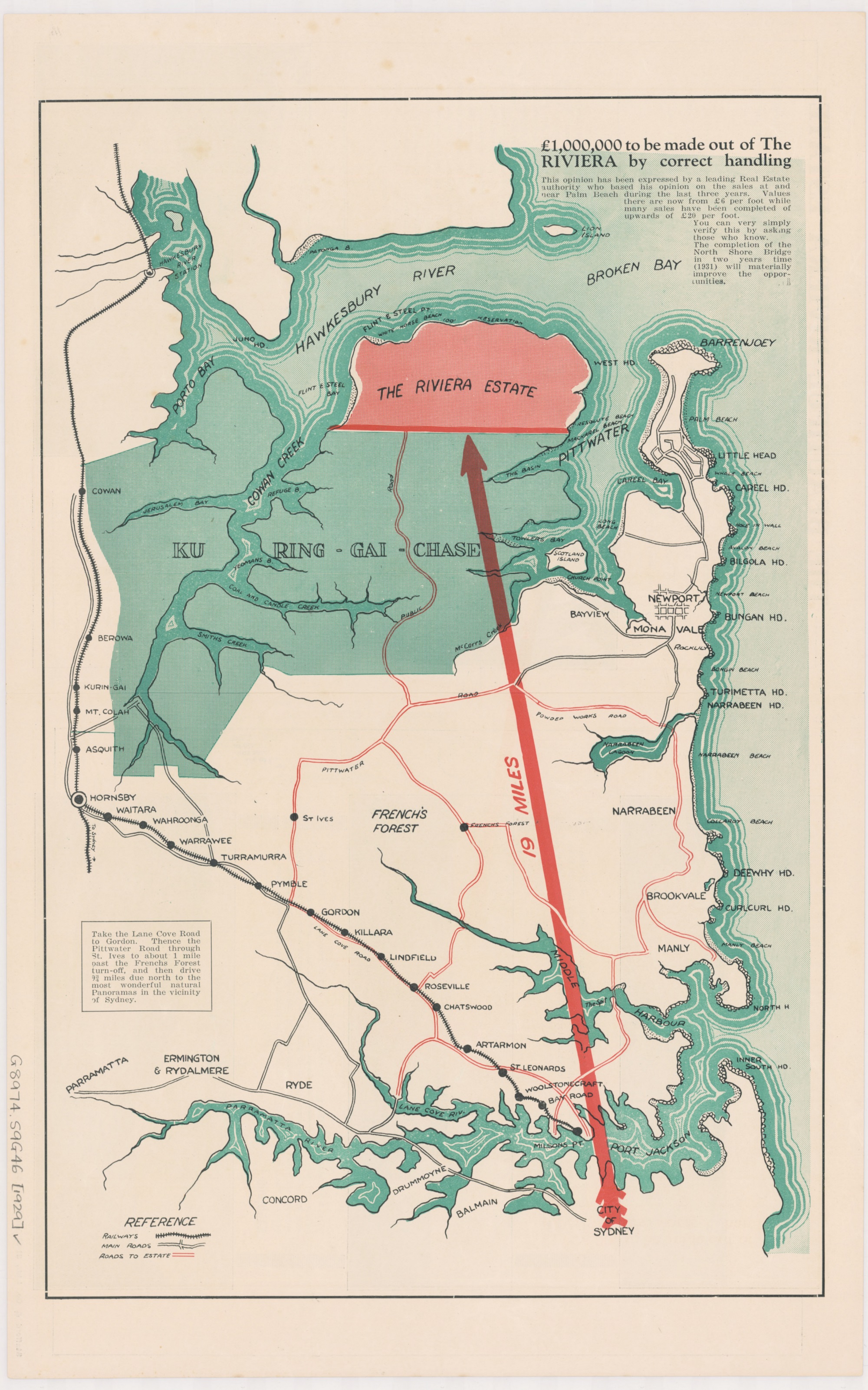
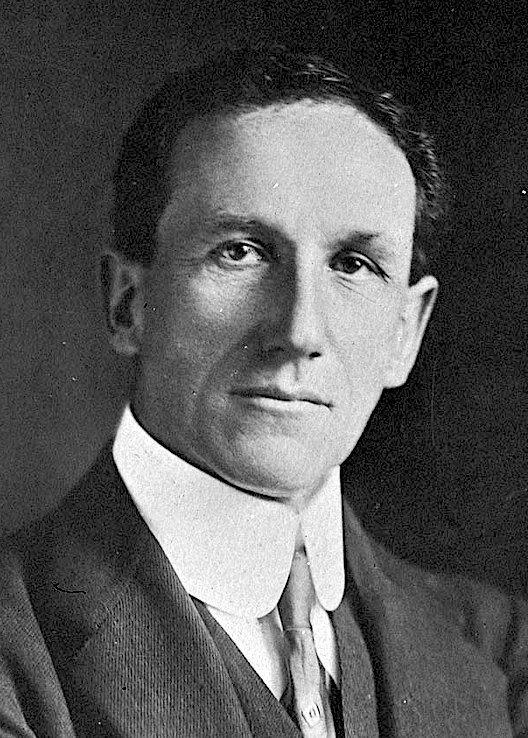
Signed on behalf of the residents of the Northern Territory
R. TOUPEIN.
Mayor. STANIFORTH SMITH,
Acting Administrator. Darwin, N.T., Australia.
December 11, 1919.
The Administrator (Mr. Staniforth Smith) was also asked by the Mayor to give a short address of welcome.
"We request that you will give the following message to Captain Ross Smith from the Captain, officers and ship's company of H.M.A.S. Sydney — Many thanks for your kind message received in latitude ten degrees, 57 minutes south, longitude 128 east. We offer our heartiest congratulations to you and your companions on winning the greatest race in the history of the world, and on the skill, gallantry, and endurance which you have all shown. We are particularly proud to feel that the first pilot to fly from England to Australia is an Australian."
"Will you kindly deliver for us a message which we particularly wish given to the first aviator arriving in Darwin as follows: The North-western Members in the Parliament of Western Australia Australia welcome your safe arrival on the soil of Northern Australia. Your wonderful performance thrills us with admiration. We congratulate you as the first great air pilot of Australia fulfilling the prophesy of Tennyson when he dipped into the future and saw the vision of the wonders that would be. By your achievement the world is brought closer to us realising visions for humanity of joy and delight." This is signed by Sir Edward Wittenoom, P. Durack, R. W. Underwood, F. W. Teasdale and E. H. Angelo.
Captain Ross Smith and Party. Dear Sir, — We herewith wish to ex-press our appreciation of your splendid achievement. Some of us do not know anything about flying, but we saw the final direct flight to the landing paddock and the final landing of your machine in Darwin, Australia, and are pleased to state that both efforts were carried on in an expert and absolutely per-fect manner. The undertaking is one that requires all the best qualities of mankind, and we take our hats off to the party who manipulated the air-ship. Any honors that are bestowed upon the party will not be too great, and in conclusion we wish you all the best of health and a successful finish to the balance of your flight. Good luck and best wishes.
One Month Until Australia's 2018 Commemorative Program Begins
Great Mackeral Beach Notices
LOCAL Government, (Amendment) Act,, 1951.—COUNTY OF CUMBERLAND PLANNING SCHEME ORDINANCE.—
Clause 12.—Notice is hereby given that in accordance with, the provisions of clause 12 of the County of Cumberland Planning Scheme Ordinance, the Cumberland County Council, being of opinion—
(a) that the development which has taken place in the immediate vicinity of each of the parcels of land or parts thereof referred to in the Schedule hereto renders those parcels or parts thereof unsuitable for the purpose of parks and recreation areas (for which purpose they were reserved by the said Ordinance); and
(b) that such purpose will not be substantially prejudiced by the erection of a building on each such parcel or part thereof has approved the erection of a building on each such parcel of part thereof,
It is further notified that such parcels or parts thereof are not required for parks and recreation areas being the purpose for which they were reserved under the County of Cumberland Planning Scheme Ordinance, and that upon publication of this notice such parcels or parts thereof shall cease to be reserved for the purpose of parks and recreation areas.
Schedule.
Lots 30, 31 and 61, d.p. 10,000, Monash-avenue, Great Mackerel Beach, Pittwater—Shire of Warringah.
That part of lot 102, d.p. 11,052, Diggers'-crescent, Great Mackerel Beach, lying between Diggers'-crescent and a line drawn between a point on the northern boundary of the lot 150 feet from its intersection with Diggers'-crescent and a point on the southern boundary of the lot at its junction with the western boundary of lot 98 of the same d.p.—Shire of Warringah. LOCAL Government, (Amendment) Act, 1951.—COUNTY OF CUMBERLAND PLANNING SCHEME ORDINANCE.— (1952, May 16). Government Gazette of the State of New South Wales (Sydney, NSW : 1901 - 2001), p. 1747. Retrieved from http://nla.gov.au/nla.news-article220106125
LOCAL GOVERNMENT ACT, 1919.—PROCLAMATION.
(l.s.) J. NORTHCOTT, Governor. 19th August, 1953.
ORDINANCE No. 35a, as proclaimed in the Government Gazette of 12th November, 1920, and subsequently amended, is hereby further amended in clause 1 by inserting under the heading "Shires" after the words "Coal and Candle Creek Wharf, Cowan Creek" appearing opposite the word "Warringah" the words "Palm Beach Wharf in Pittwater Park, Salt Pan Wharf, Taylor's Point Wharf, Great Mackerel Wharf, four wharves on Scotland Island".
(S. 53-787)
By His Excellency's Command,
J. B. RENSHAW. [7199] GOD SAVE THE QUEEN! LOCAL GOVERNMENT ACT, 1919.—PROCLAMATION. (1953, August 28). Government Gazette of the State of New South Wales (Sydney, NSW : 1901 - 2001), p. 2736. Retrieved from http://nla.gov.au/nla.news-article220068015
FAUNA PROTECTION ACT, 1948.
Appointment of Honorary Rangers.
THE undermentioned persons have! been appointed as Honorary Rangers for the purposes of the abovenamed Act:—
Mrs. Shirley Doyle, Mackerel Beach, Pittwater, via Palm Beach; Mr. Bernard Charles Duck, R.M.B. 71, Werombi-rd., via Camden; Mr. David Colin Whiteman, Lake Midgeon Station, Narrandera. (A. 56-1,656, A. 56-1,825, A. 56-1,919)
(1975) C. A. KELLY. FAUNA PROTECTION ACT, 1948. (1956, November 16). Government Gazette of the State of New South Wales (Sydney, NSW : 1901 - 2001), p. 3377. Retrieved from http://nla.gov.au/nla.news-article220347432
PUBLIC HEALTH ACT 1902 (SECTION 55)
Land Affected by Section 55 of the Public Health Act at Great Mackerel Beach, Shire of Warringah, Area 948
THE Secretary of the Department of Health has reported that after due inquiry he is of the opinion that it would be prejudicial to health if certain land situated in the Shire of Warringah and described in the Schedule hereunder, were built upon in its present condition.
Now, therefore, in pursuance of the power and authority vested in me by section 55 (1) of the Public Health Act 1902, I hereby declare that such land shall not be built upon except with the approval of the Secretary of the Department of Health or until this notice has been revoked by me.
PETER COLLINS, Minister for Health.
All that piece or parcel of land situated at Mackerel Beach, in the Shire of Warringah, Parish of Broken Bay, County of Cumberland, being lots 115 to 118 inclusive in Deposited Plan No. 11052, and shown by red edging and light pink colour on Plan No. 948 deposited in the office of the Department of Health, New South Wales. PUBLIC HEALTH ACT 1902 (SECTION 55) (1989, January 27). Government Gazette of the State of New South Wales (Sydney, NSW : 1901 - 2001), p. 445. Retrieved from http://nla.gov.au/nla.news-article231511597
